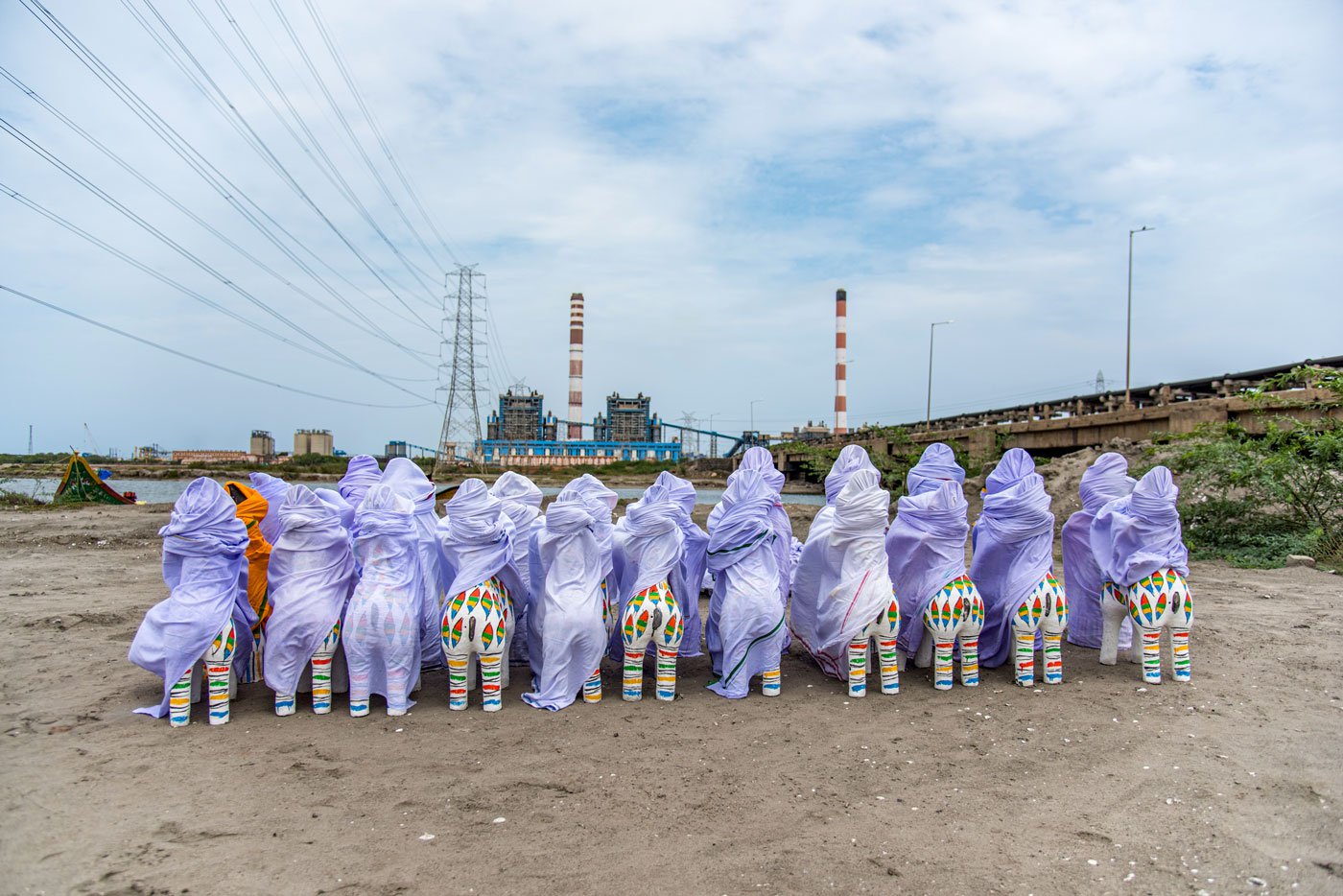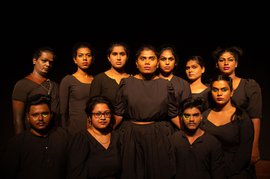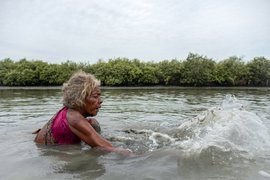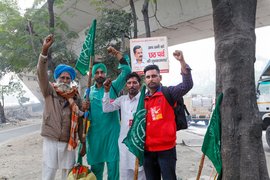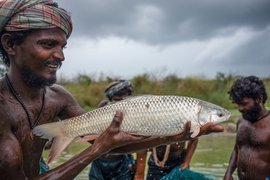Kannisamy guards the borders of villages along the coastline of Thiruvallur district in north Tamil Nadu. This guardian deity of fishing communities looks typically like a person from the community: he is clad in bright-coloured shirts, and has a veti with a cap on his head. Fishermen offer prayers to him before entering the sea, praying for a safe-return.
Fishing families worship Kannisamy in different avatars and it’s a popular ritual from north Chennai up to Pazhaverkadu, (popularly known as Pulicat).
Ennur Kuppam’s fishermen travelled to Athipattu, nearly seven kilometres away, to buy Kannisamy idols. The festival, held in June, is an annual celebration and lasts a week. I joined a group of fishermen from this village for the trip in 2019. We banked on the Kosasthalaiyar river near north Chennai’s thermal power plant, and then walked towards Athipattu village.
We approached a two-storeyed house with several idols of Kannisamy lined up on the floor. The idols were wrapped in white cloth. A man in his mid-40s, wearing a white striped-shirt and veti with thiruneer [holy ash] smeared on his forehead, lights camphor is standing in front of the idols. He performs pujai before placing one on the shoulders of each fishermen.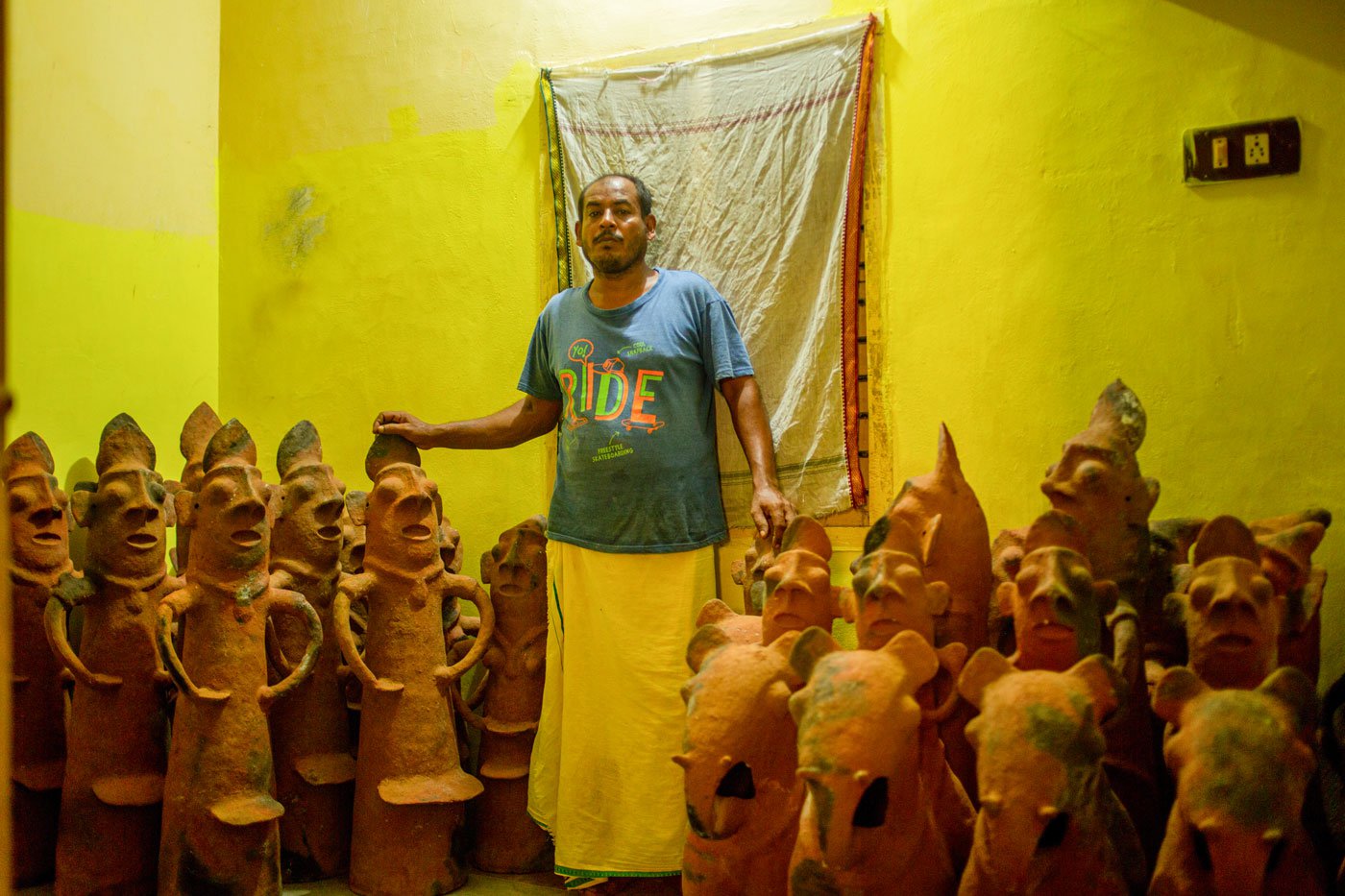
Dilli anna makes idols of Kannisamy, the deity worshipped by fishing communities along the coastline of north Tamil Nadu
That is my first meeting with Dilli anna , and circumstances don’t allow me to converse with him. I return with the fishermen carrying the idols on their shoulders. It is a four-kilometre walk back to the Kosasthalaiyar river, and then a three kilometre boat-ride to get back to Ennur Kuppam.
Once they reach the village, fishermen line up the idols near a temple. Everything needed to perform rituals and puja are placed in front of the idols. As the day darkens, Dilli anna comes to the kuppam . Villagers start to gather around the idols. Dilli anna removes the white cloth and draws pupils on the eyes of Kannisamy using mai [kajal], symbolically opening the eyes of these idols. He, then, bites off the neck of a cock, a sacrificial ritual believed to ward off evil.
Following this, Kannisamy idols are taken to the edge of the village.
Ennore’s coastal and mangrove landscape has introduced me to a lot of people, and among them, Dilli anna is an important person. He has dedicated his entire life to making Kannisamy idols. When I went back to visit Dilli anna in his house at Athipattu in May [2023], I didn’t see any household things or decorative items in his almirah. Only heaps of clay, husk and idols; the fragrance of clay filled the entire house.
To make a Kannisamy idol, first a fistful of mud taken from the village boundary has to be mixed with clay. “It is a belief that the strength of god will go to that village if we do this,” says 44-year-old Dilli anna . “Generation after generation, it is my family who has been making Kannisamy idols. When my father was around, I was never interested in this. In 2011, my father passed away. Then, everyone around me told that after my father I have to take over… that is the reason why I do it. There is no one else here.”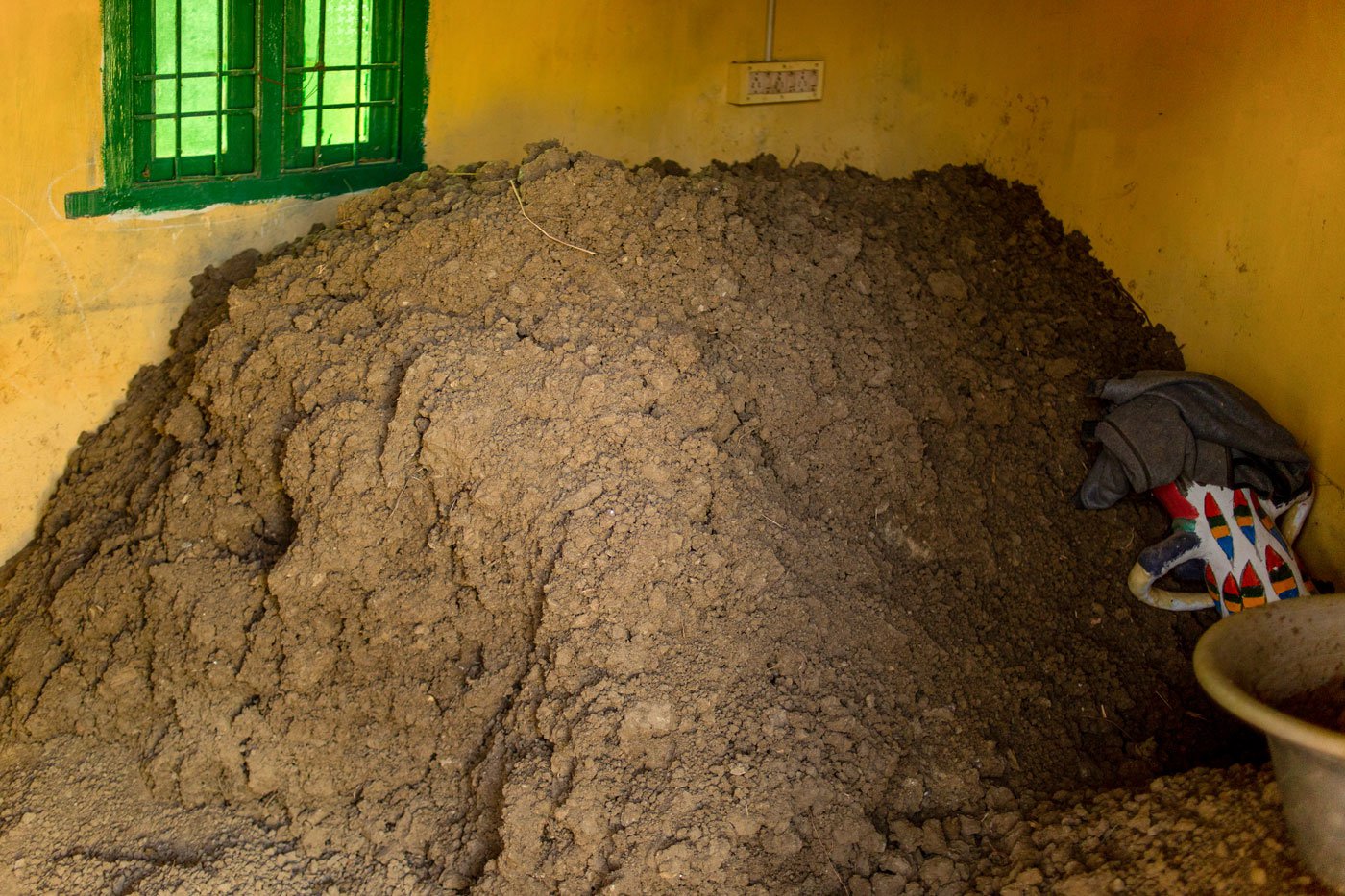
The fragrance of clay, a raw material used for making the idols, fills Dilli anna's home in Athipattu village of Thiruvallur district
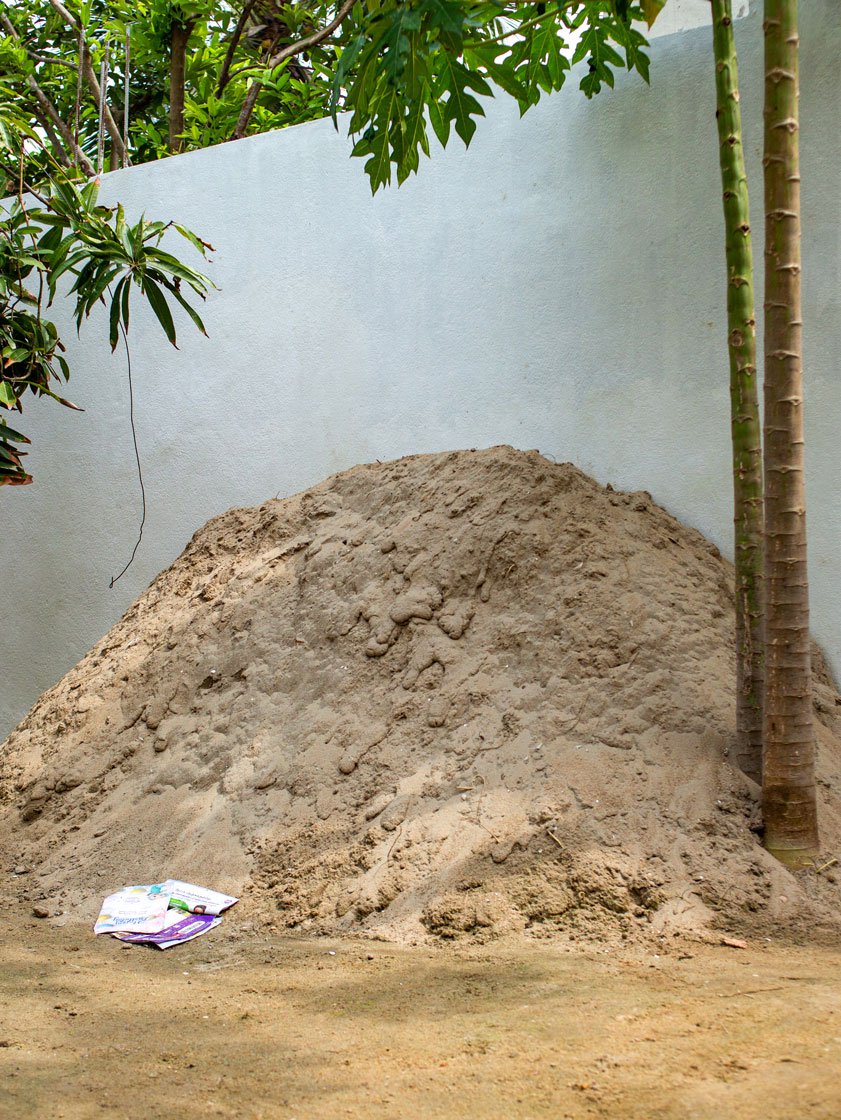
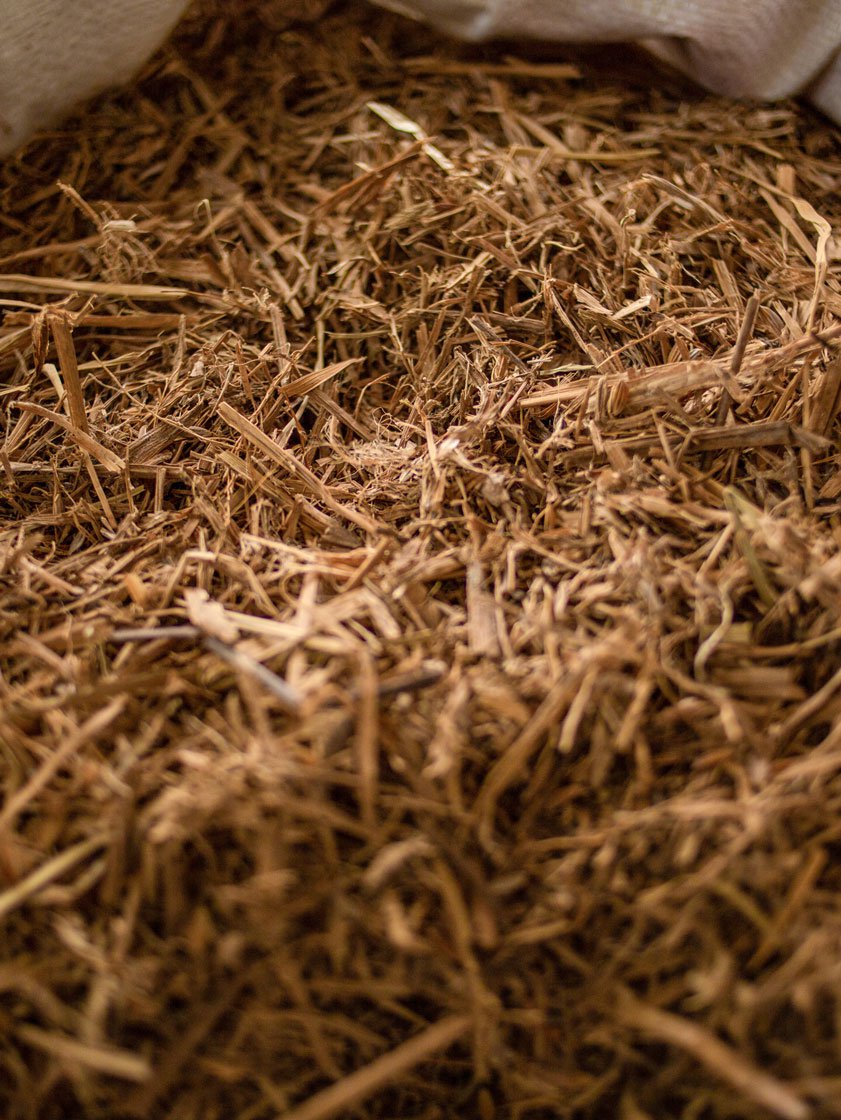
Dilli anna uses clay (left) and husk (right) to make the Kannisamy idols. Both raw materials are available locally, but now difficult to procure with the changes around
In 10 days, Dilli anna can get 10 idols ready simultaenously, working eight hours a day. In a year he make close to 90 idols. “For one idol, it will take me 10 days of work. First, we have to break the clay, then remove the stones and clean it, then mix sand and husk with clay,” explains Dilli anna . Husk is used to give strength to the structure, and the idols are layered with it.
“From the time I start making the idol till it is ready, I have to work alone. I do not have money to pay for an assistant,” he says. “This entire work has to be done in the shade as in in direct sunlight, the clay won’t stick, and will break away. When the idols are ready, I have to bake then in fire to get it ready. It takes at least 18 days to finish this work.”
Dilli anna supplies idols for the villages surrounding Athipattu especially Ennur Kuppam, Mugathivara Kuppam, Thazhankuppam, Kattukuppam, Mettukuppam, Palthottikuppam, Chinnakuppam, Periyakulam.
During festivals, people from these villages place idols of Kannisamy as offerings at the borders of their village. While some want a male Kannisamy idol, others prefer to offer a female deity called by different names: Paapathi amman , Bommathi amman , Pichai amman . They also like their village deity to be mounted on a horse or elephant, and next to the statue of a dog. It is believed that the gods come and play in the night, and the next morning a crack can be seen on the feet of the village deity.
“In some places, they [fishermen] keep [replace]Kannisamy idols every year. In other places, they [fishermen] change them once in two years, or once in four years,” says Dilli anna.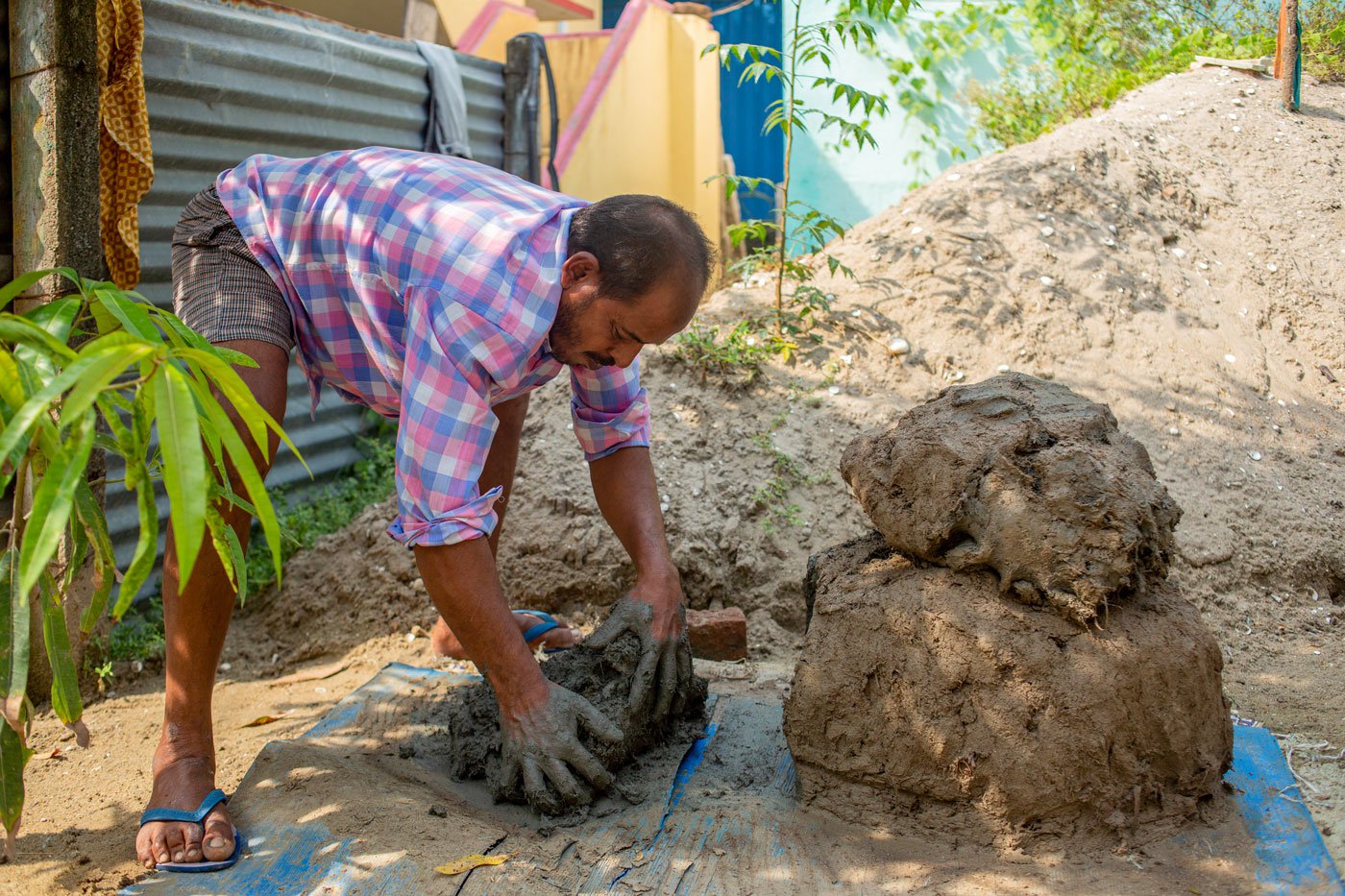
Dilli anna preparing the clay to make idols. 'Generation after generation, it is my family who has been making Kannisamy idols'
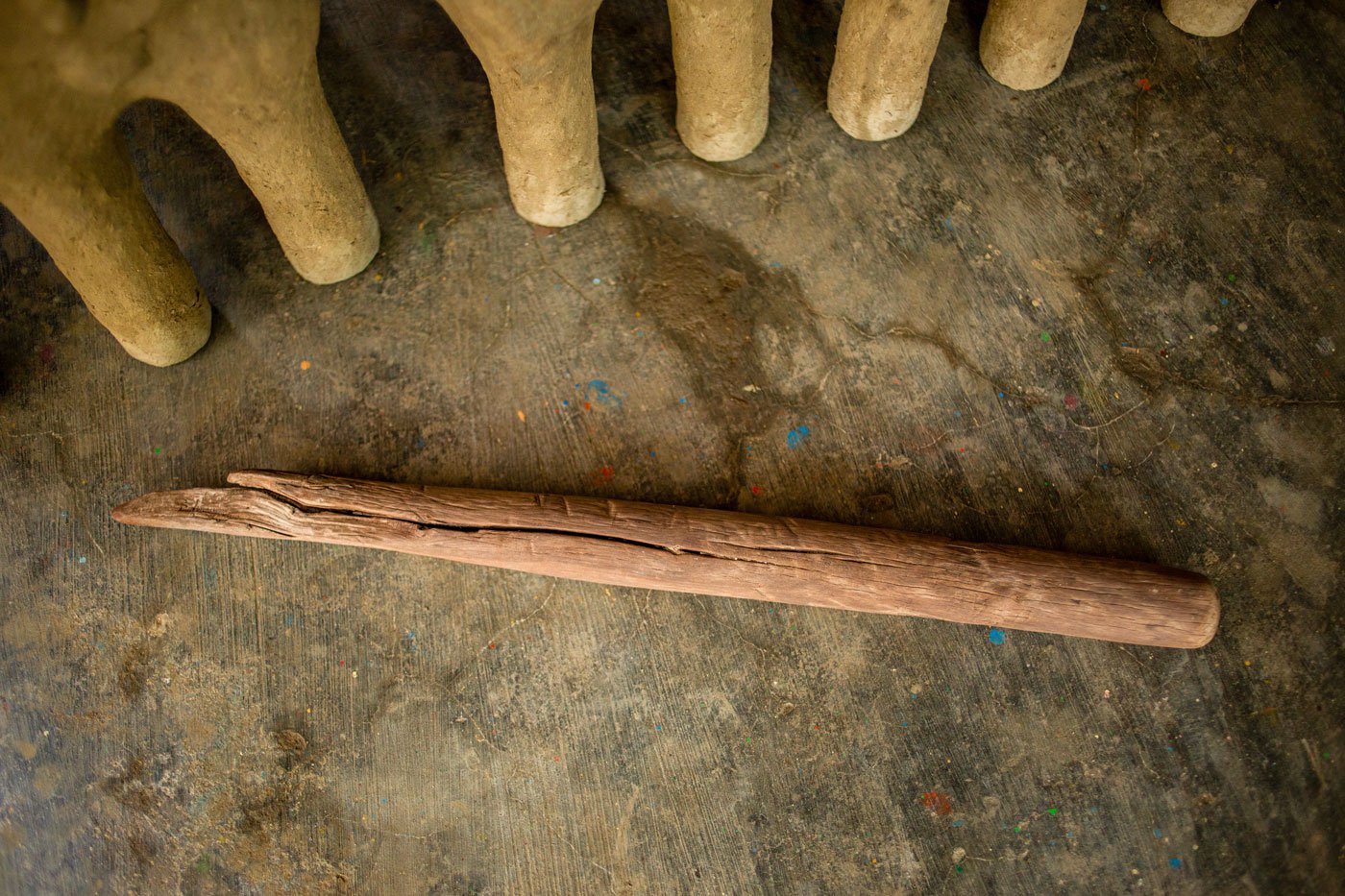
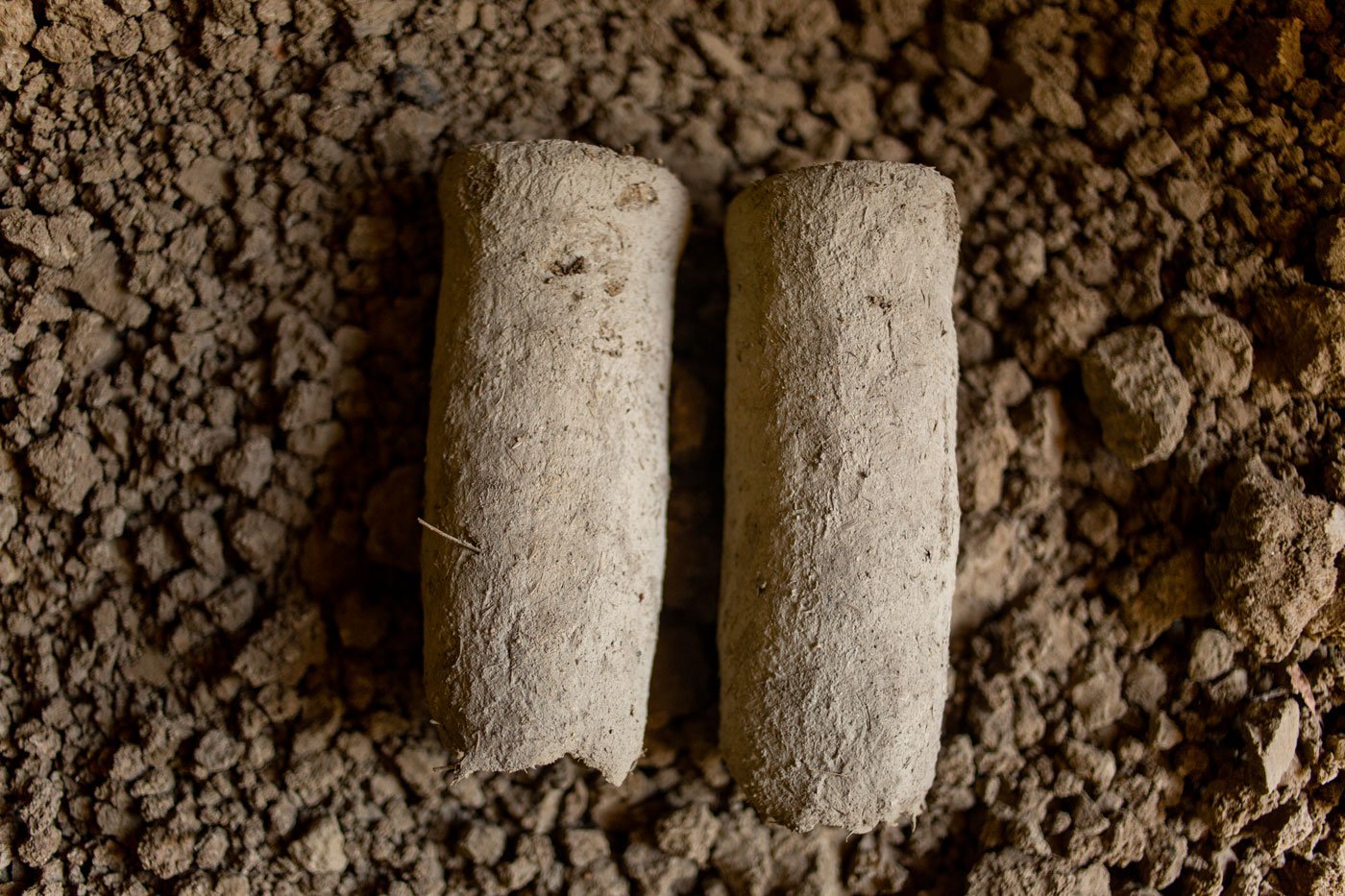
The clay is shaped into the idol's legs using a pestle (left) which has been in the family for many generations. The clay legs are kept to dry in the shade (right)
Though sales to fishermen from these villages has not stopped or slowed, Dilli anna is unsure who will take forward this traditional occupation that he has been doing for the last three decades. It has become an expensive task for him: “These days, the costs are so high… if I tell the cost [of an idol] based on that, they [customers] question me asking why I am demanding that price. But, only we are aware of the hardship involved in this.”
With the increase in thermal power plants along the north Chennai coastline, ground water is turning saline. This has reduced agricultural activities here, affecting the nature of soil. “These days, I am unable to get clay anywhere,” complains Dilli anna who has to search for the raw materials.
He adds that buying clay is expensive and, “I dig [up the ground] near my house for clay and then fill the hole with sand,” explains anna as sand is less expensive than clay.
Since he is the only idol-maker in Athipattu, negotiating alone with the panchayat to dig up clay from public spaces is hard going. “If there were 10 to 20 families making idols, we could have asked to dig near ponds or lakes. The panchayat would have provided clay to us for free. But, I am the only one making idols now and it is difficult for me to ask for one person, so I take the clay from around my house.”
The husk Dilli anna needs to make the idols is becoming scarce as less and less paddy is harvested now by hand. “In machinery harvesting, we don’t get lot of husk. Only if there is husk, there is work. If not, no,” he says. “I search somewhere and get husk from those who have harvested [paddy] by hand. I have stopped making flower pot and stoves… the demand for it is high, but I am unable to make these things.”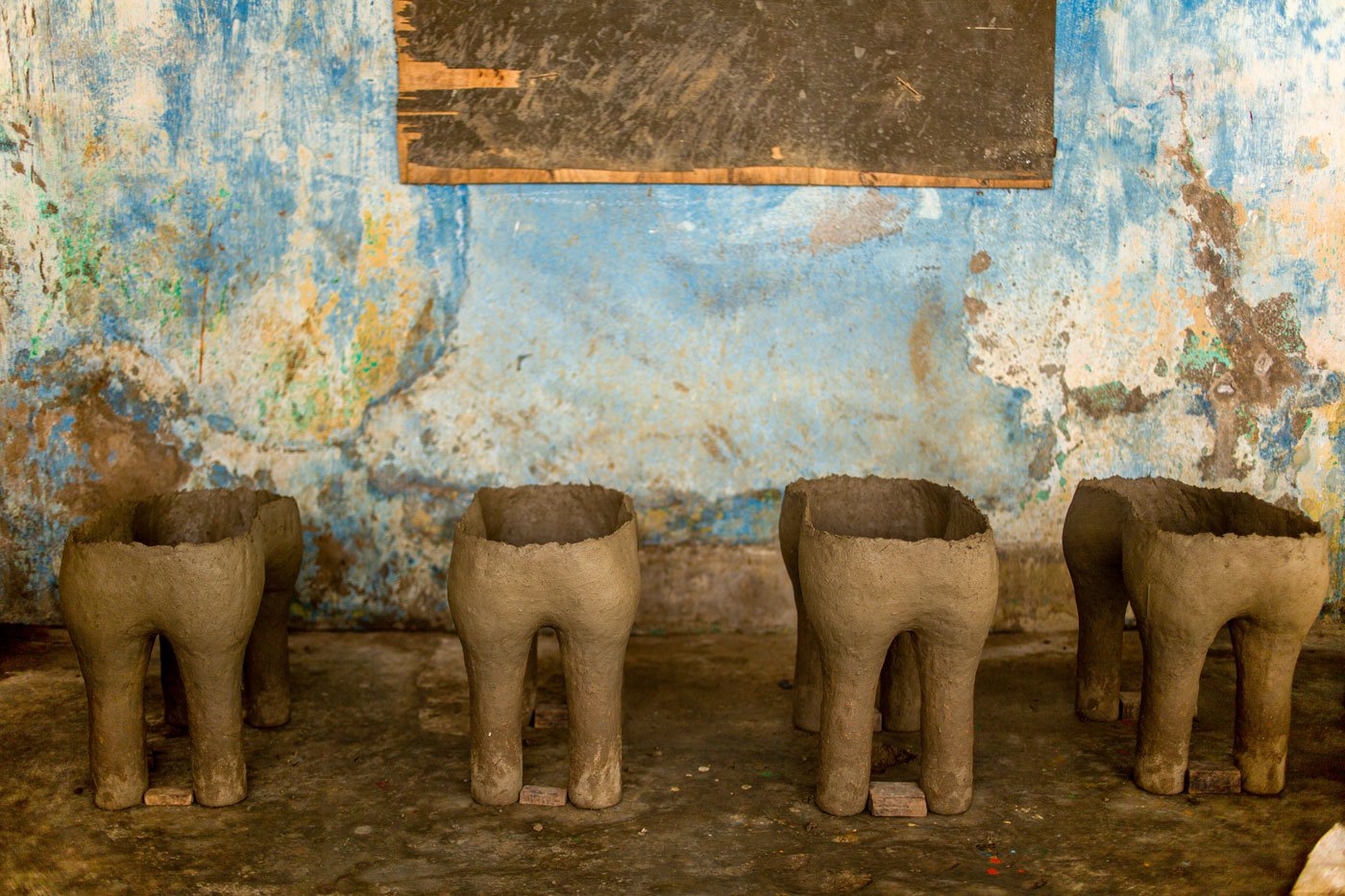
The base of the idol must be firm and strong and Dilli anna uses a mix of hay, sand and clay to achieve the strength. He gets the clay from around his house, 'first, we have to break the clay, then remove the stones and clean it, then mix sand and husk with clay'
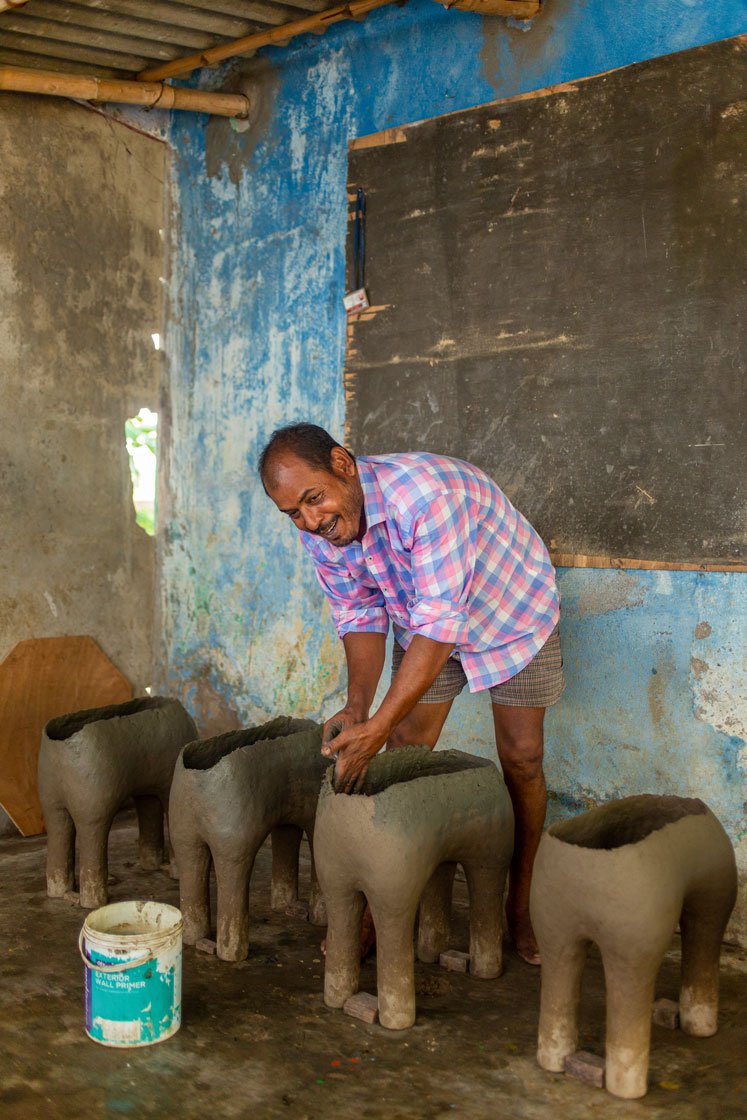
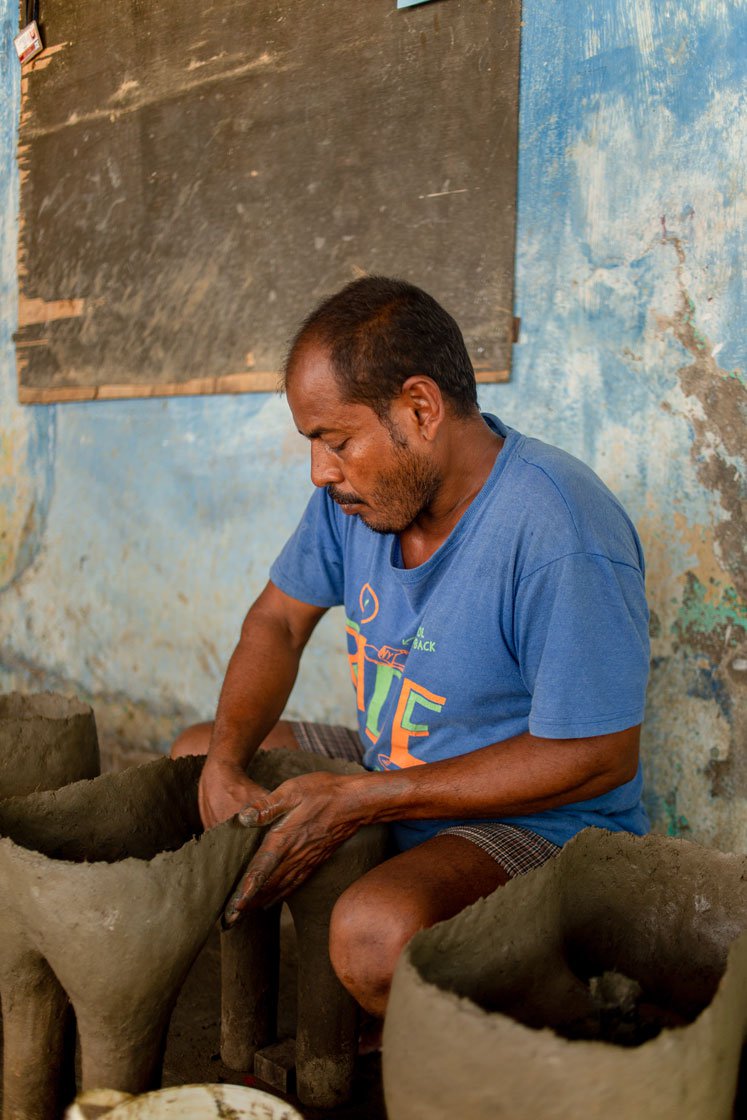
The idol maker applying another layer of the clay, hay and husk mixture to the base of the idols. ' This entire work has to be done in the shade as in in direct sunlight, the clay won’t stick, and will break away. When the idols are ready, I have to bake then in fire to get it ready'
He explains his earnings: “I get 20,000 rupees for an idol from a village, but after expenses, I earn 4,000 rupees. If I make idols for four villages, then I can earn 16,000 rupees.”
Anna can make idols only during the summer season, from February to July. When the festivities begin in aadi [July], people arrive to buy idols. “What I have worked hard to make over six to seven months, is sold in a month. For the next five months there will be no money coming in. Only when I sell the idols, will I get money.” Dilli anna added that he does not seek other work.
His day starts at at 7 a.m. and goes for eight hours. He has to constantly watch over the drying idols or they may break. He tells me a small story to show his dedication to his craft: “Once I suffered a lot of pain because I could not breathe in the night. I cycled to a hospital at one in the morning,” recalls Dilli anna . “The doctors gave me glucose [intravenous fluids]. My brother took me to another hospital the same morning for scanning but the staff said it would be done at 11 that night.” Dilli anna decided to leave without getting a scan because, “I had to watch the idols.”
Dilli anna’ s family once owned four acres of land in Chepakkam hamlet in Kattupalli village, 30 years ago. “Back then, my house was near Chepakkam cement factory near a Ganesh temple. We had built a house close to the land so we could cultivate,” he says. When groundwater turned saline, they had to stop cultivating. After that they sold the house and moved to Athipattu.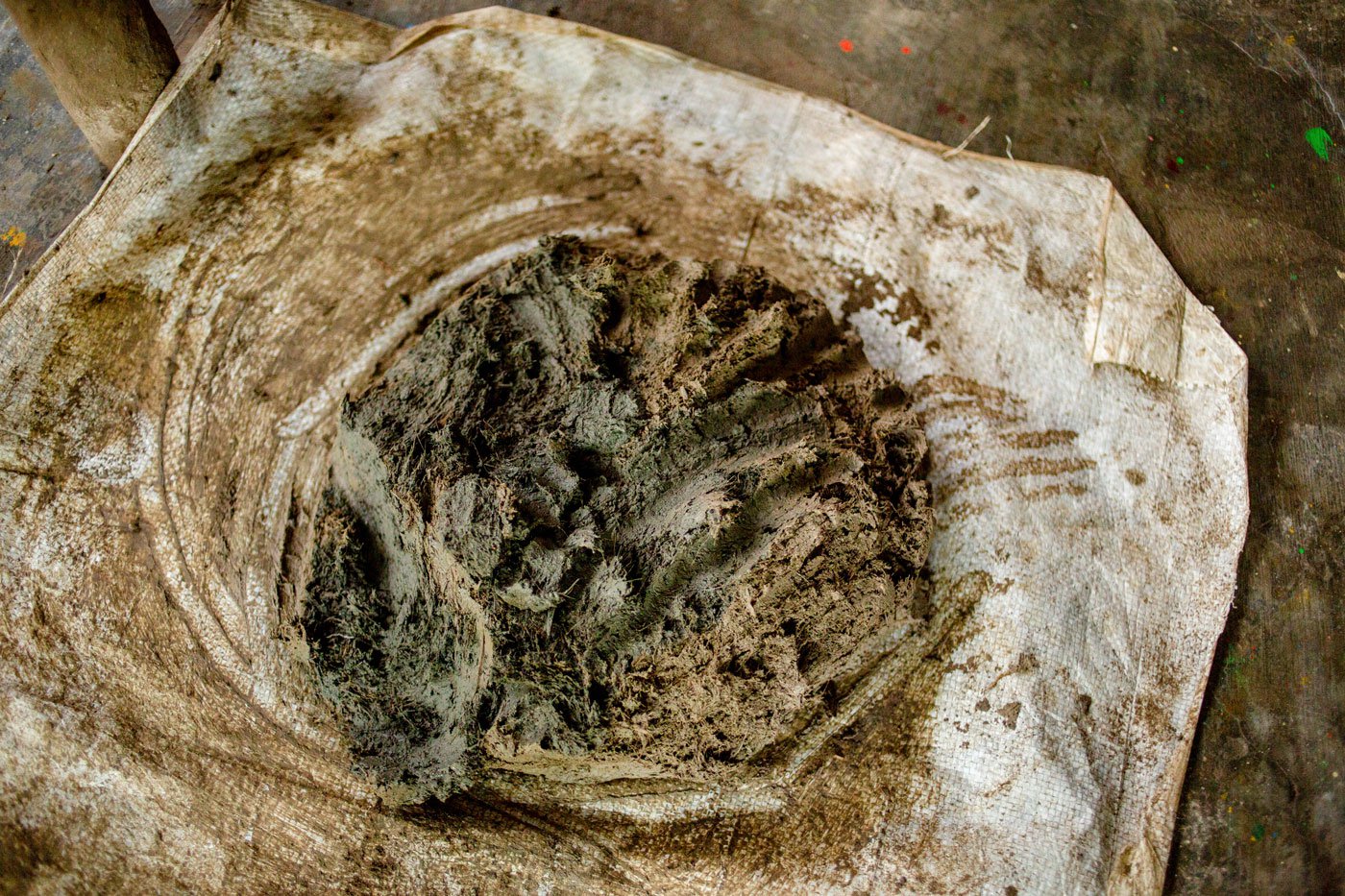
A mixture of clay, sand and husk. I t has become difficult to get clay and husk as the inc rease in thermal power plants along the north Chennai coastline had turned ground water saline. This has reduced agricultural activities here and so there is less husk available
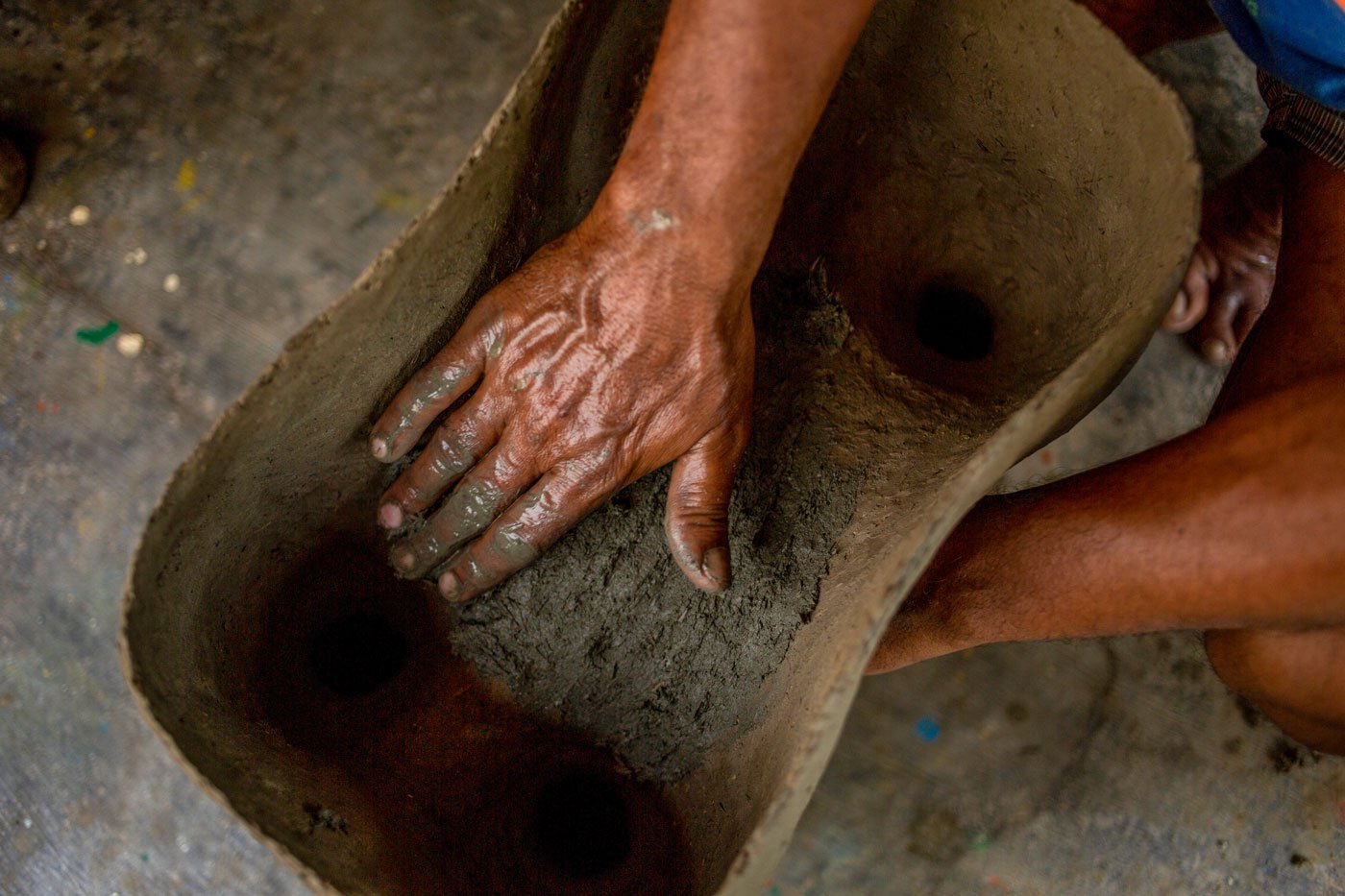
Dilli
anna
applies an extra layer of the mixture to join the legs of the
idol. His work travels to
Ennur Kuppam, Mugathivara Kuppam, Thazhankuppam, Kattukuppam, Mettukuppam, Palthottikuppam, Chinnakuppam, Periyakulam villages
“We are four of us [siblings] and it is only I who continue with this traditional work. I am not married. How can I look after a family or a child with this money?” he asks. Dilli anna fears that if he takes up any other work, then there will be no one to make these idols for the fishing communities. “It has been passed on to me through my ancestors, I cannot leave it. If they [fishermen] do not have these idols, they will struggle.”
For Dilli anna , idol making is not just a profession, it is a celebration. He remembers that during his father’s time they would sell an idol for 800 or 900 rupees. Everyone who came to buy an idol would be served food. “It was like a house where a wedding is taking place,” he recalls.
Dilli anna is happy when the idols bake without breaking. The clay objects have become his companion. “I feel like there is a person with me while I am making these idols. I feel like I am talking to these idols. These idols have been with me in the most difficult circumstances. [But] I am worried…who is going to make these idols after me?” he asks.
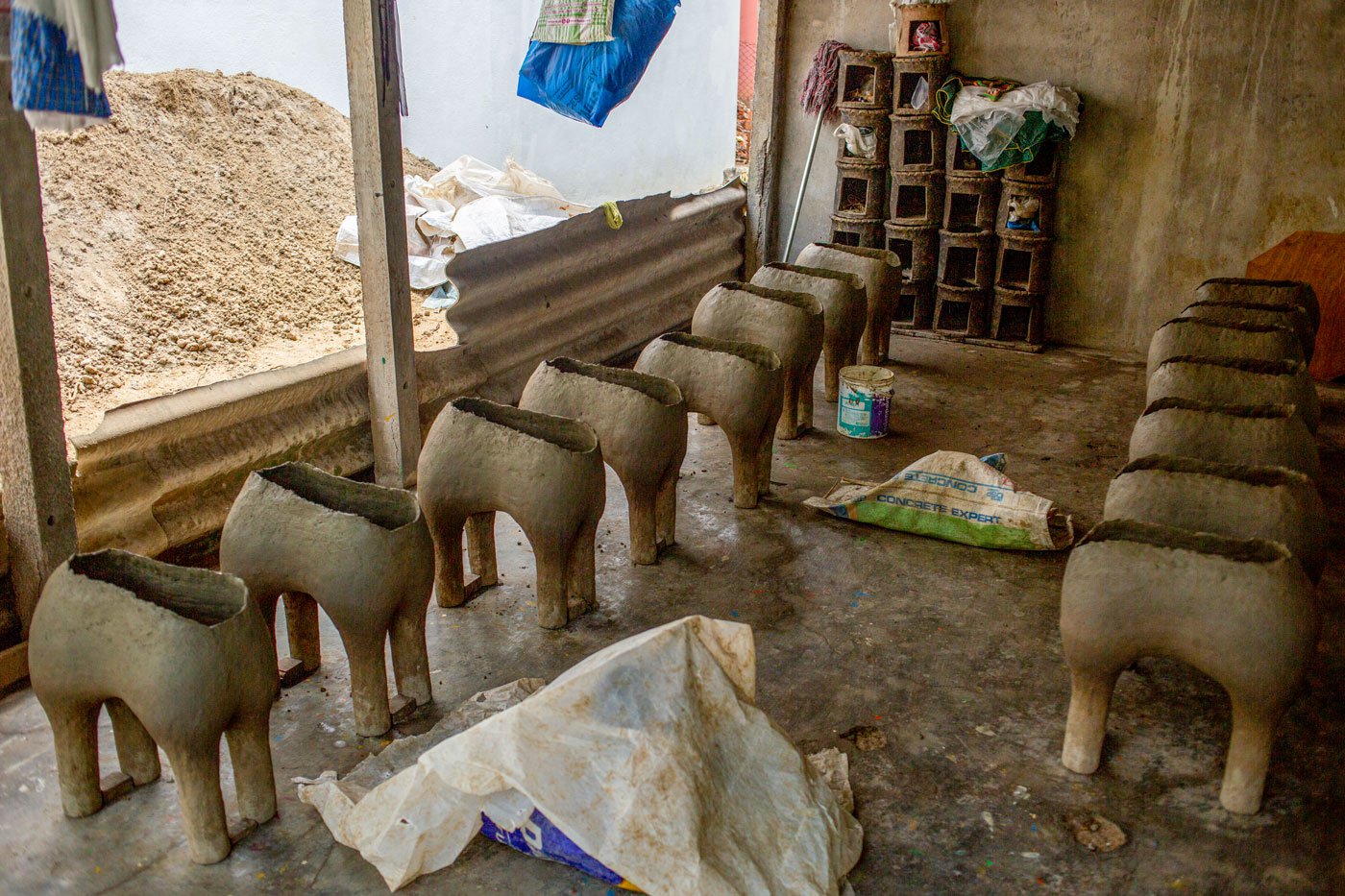
‘This entire work has to be done in the shade as in direct sunlight, the clay won’t stick and will break away,' says Dilli anna
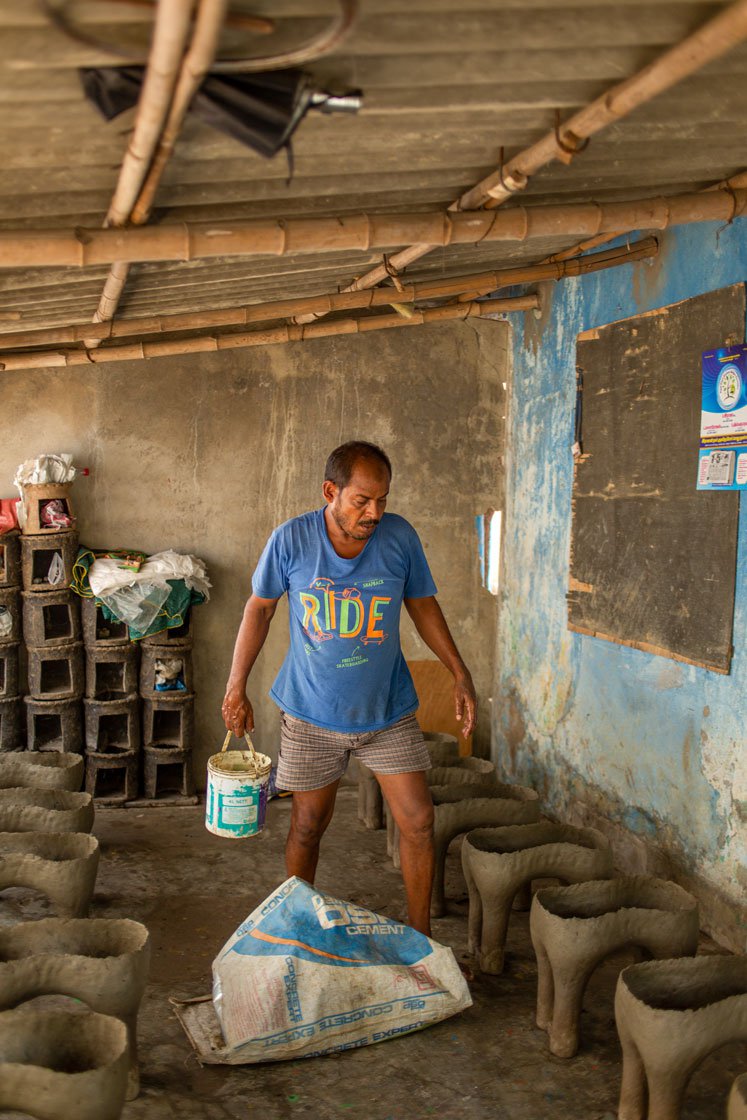
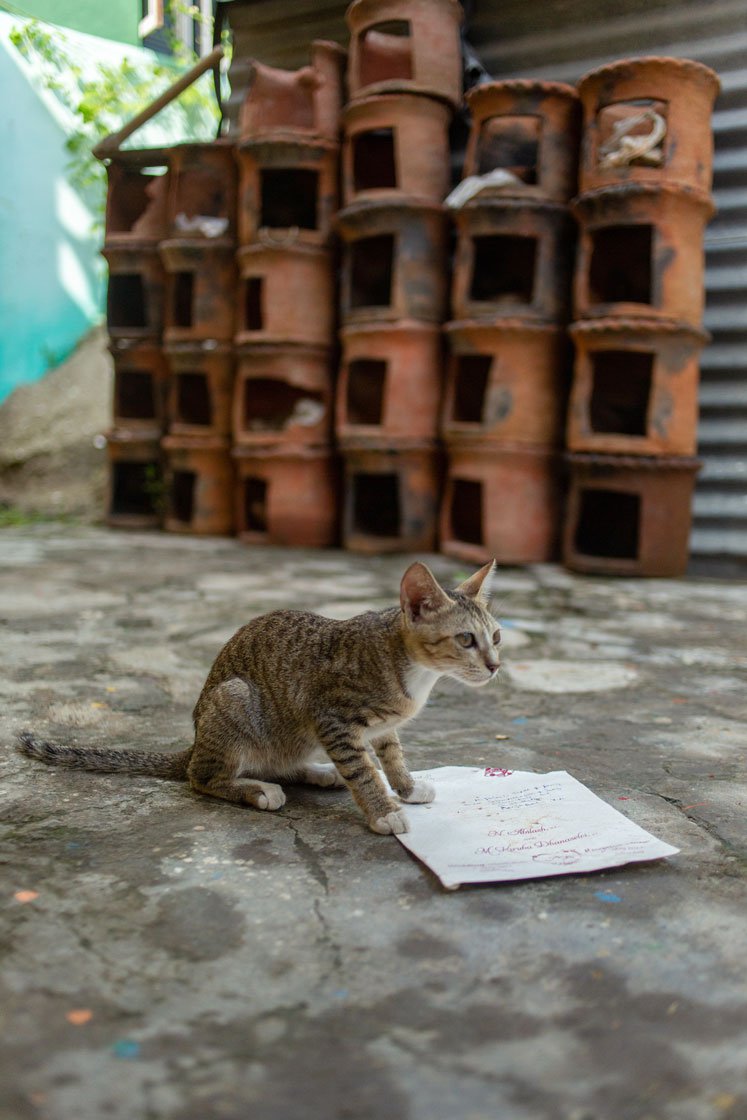
Left: Athipattu's idol maker carrying water which will be used to smoothen the edges of the idols; his cat (right)
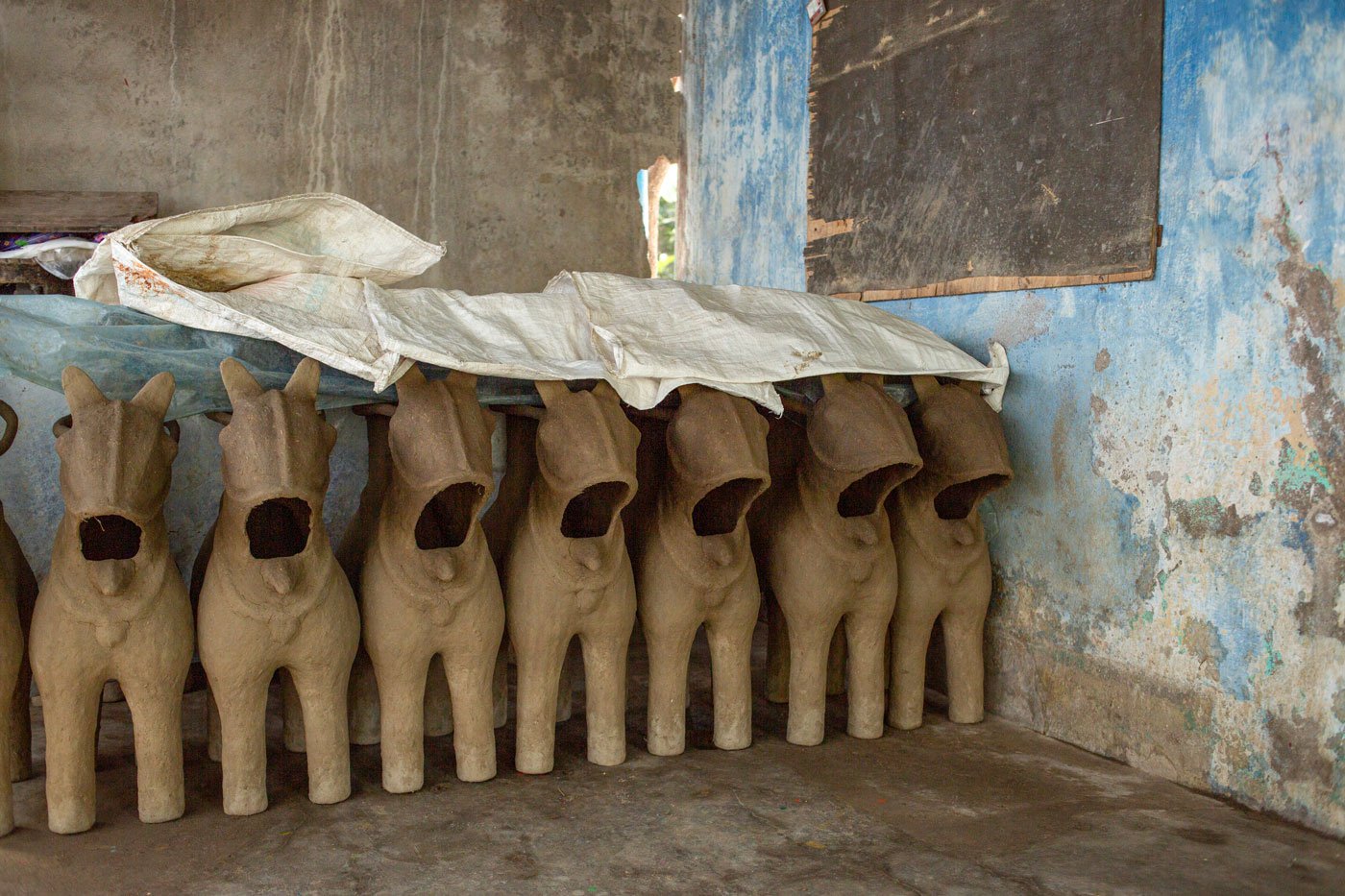
The elephant and horses are the base for the idols; they are covered to protect them from harsh sunlight
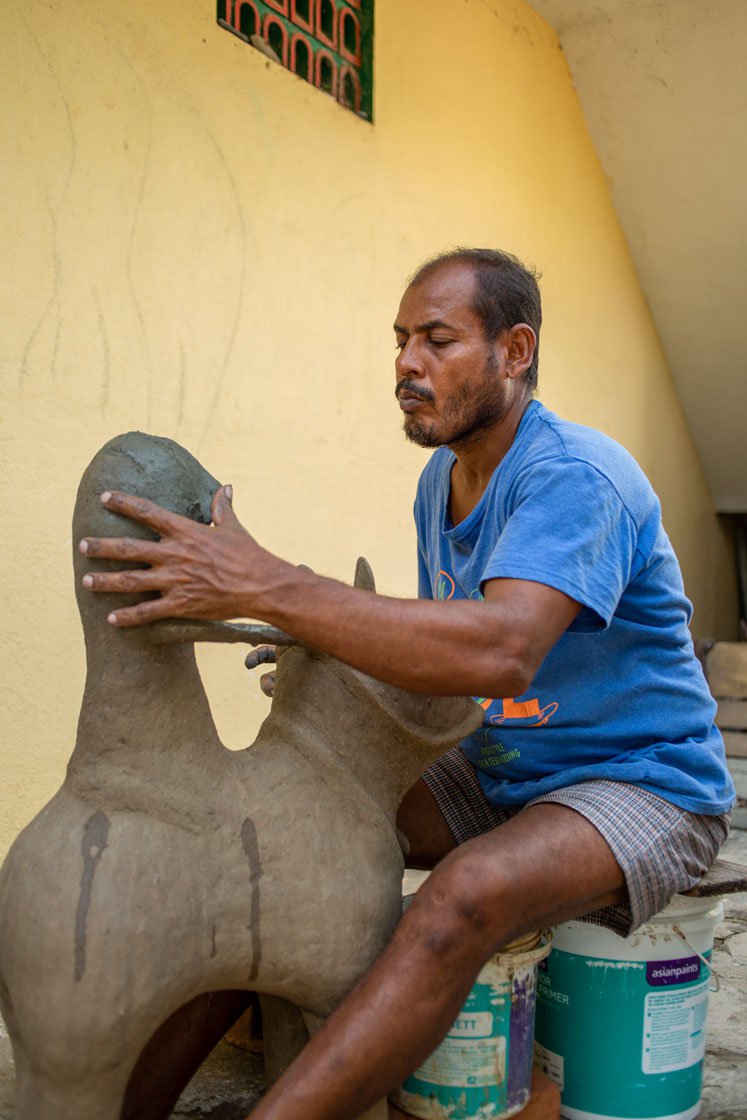
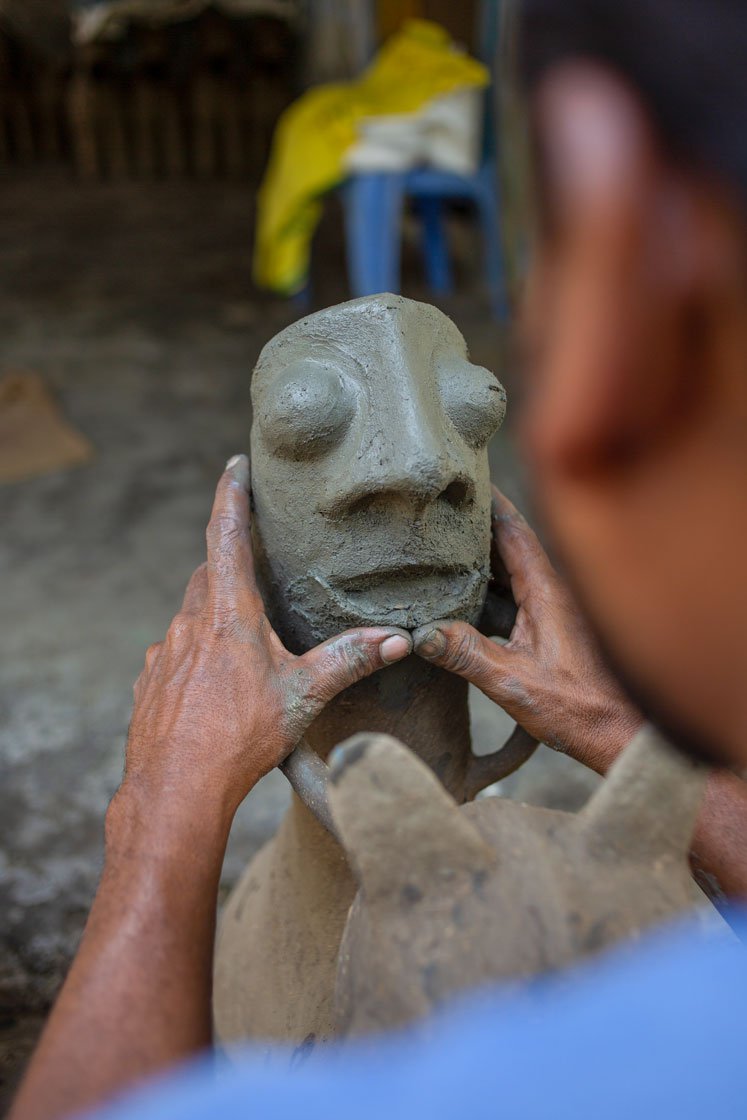
Dilli anna gives shape to the Kannisamy idol's face and says, 'from the time I start making the idol till it is ready, I have to work alone. I do not have money to pay for an assistant'
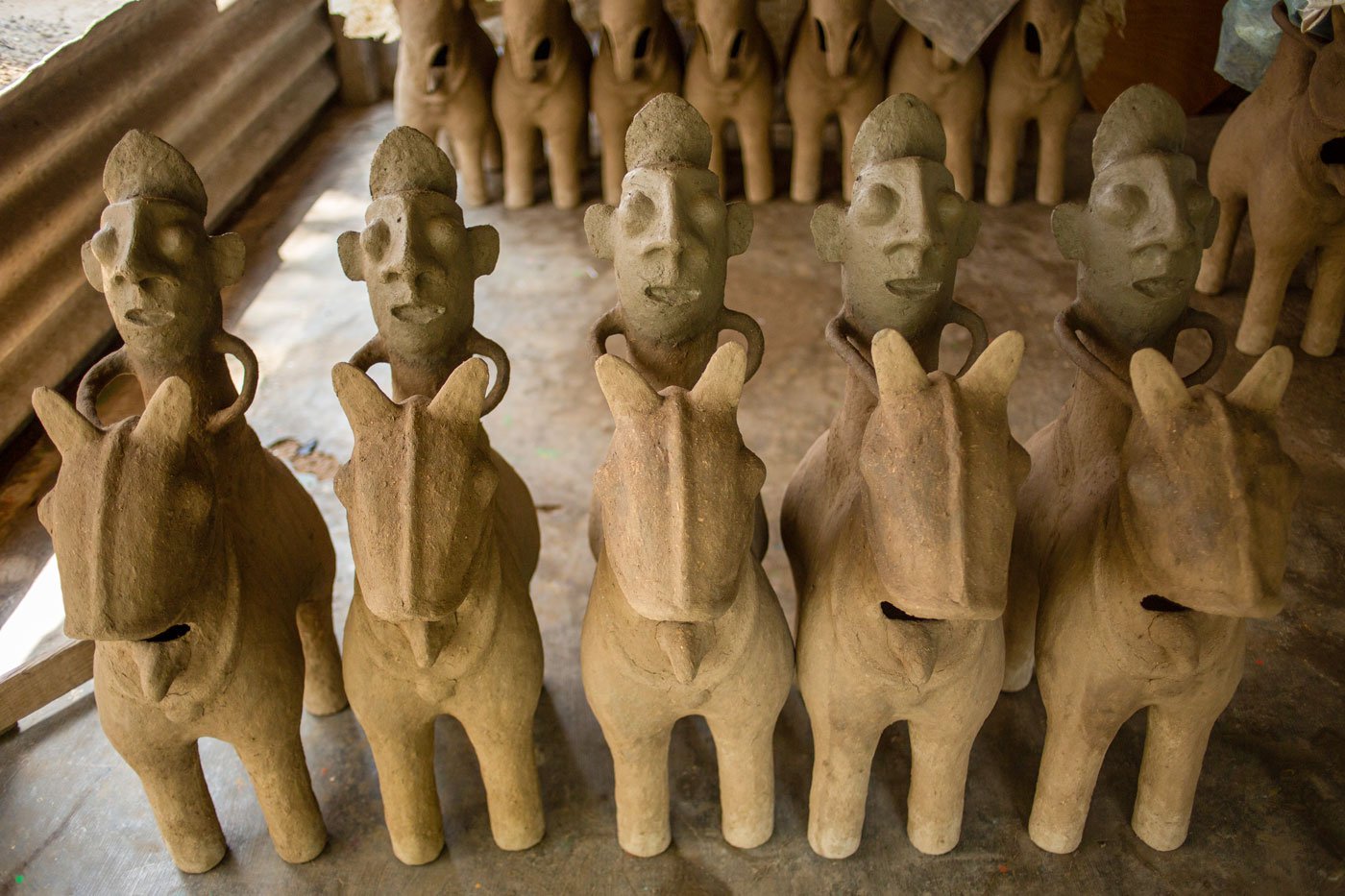
The idols have dried and are ready to be painted
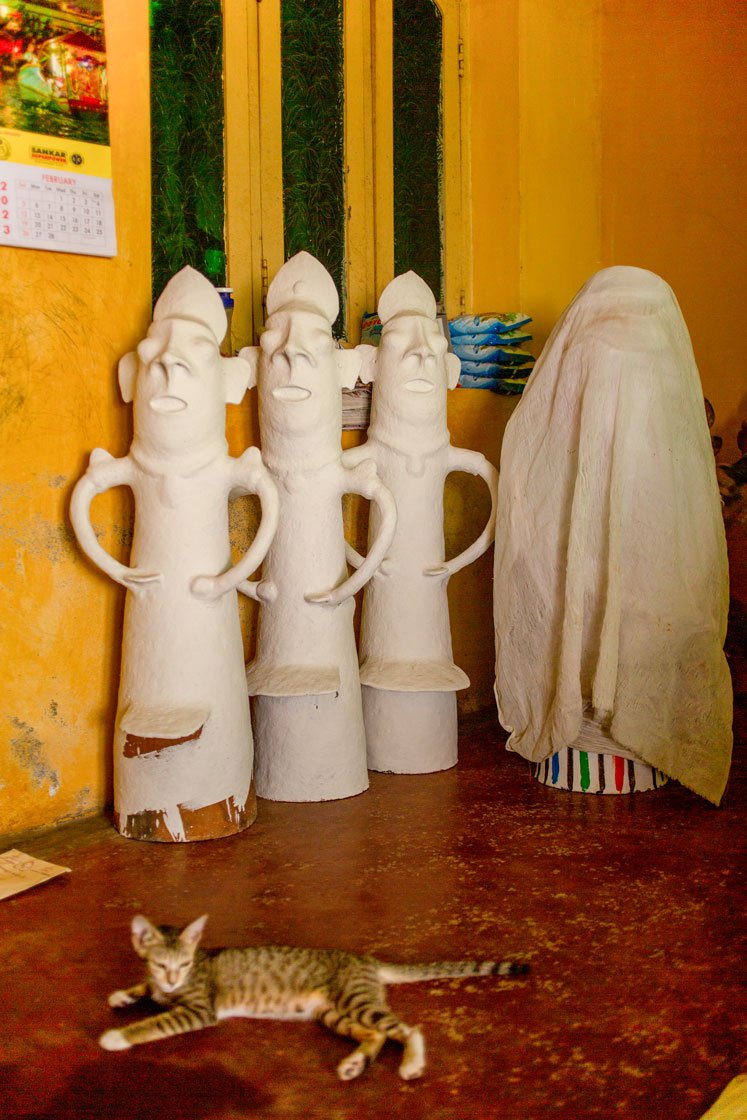
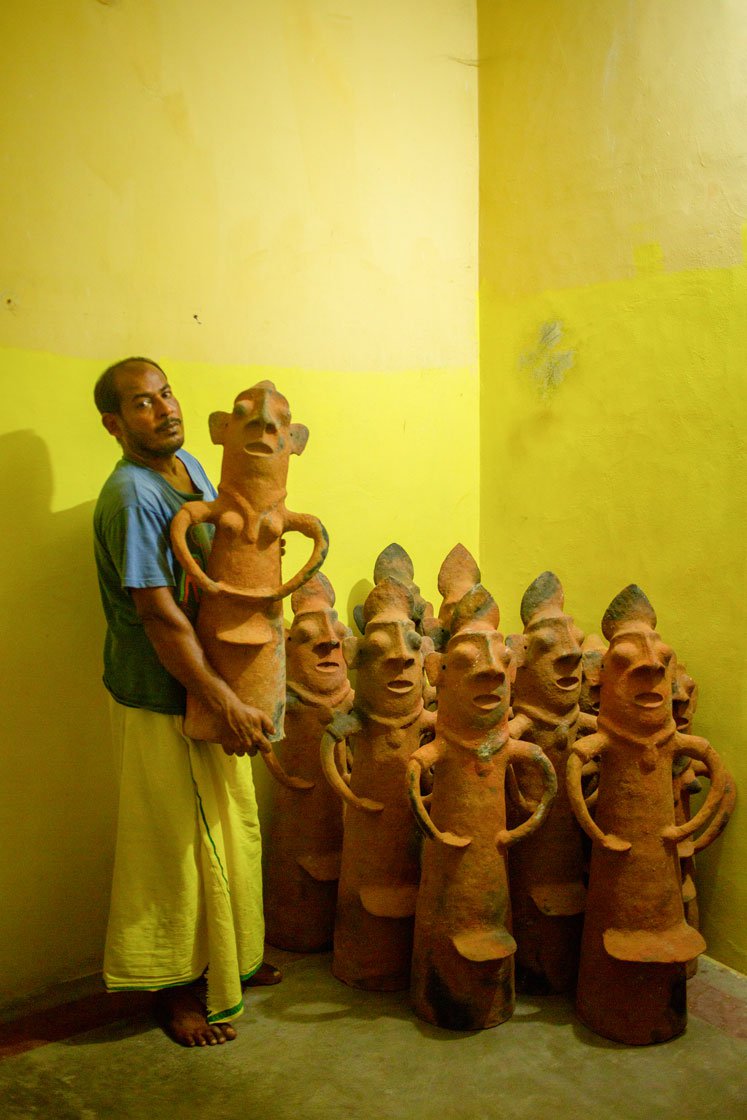
Left: The Kannisamy idols painted in white. Right: Dilli anna displays his hard work. He is the only artisan who is making these idols for the fishing community around Athipattu
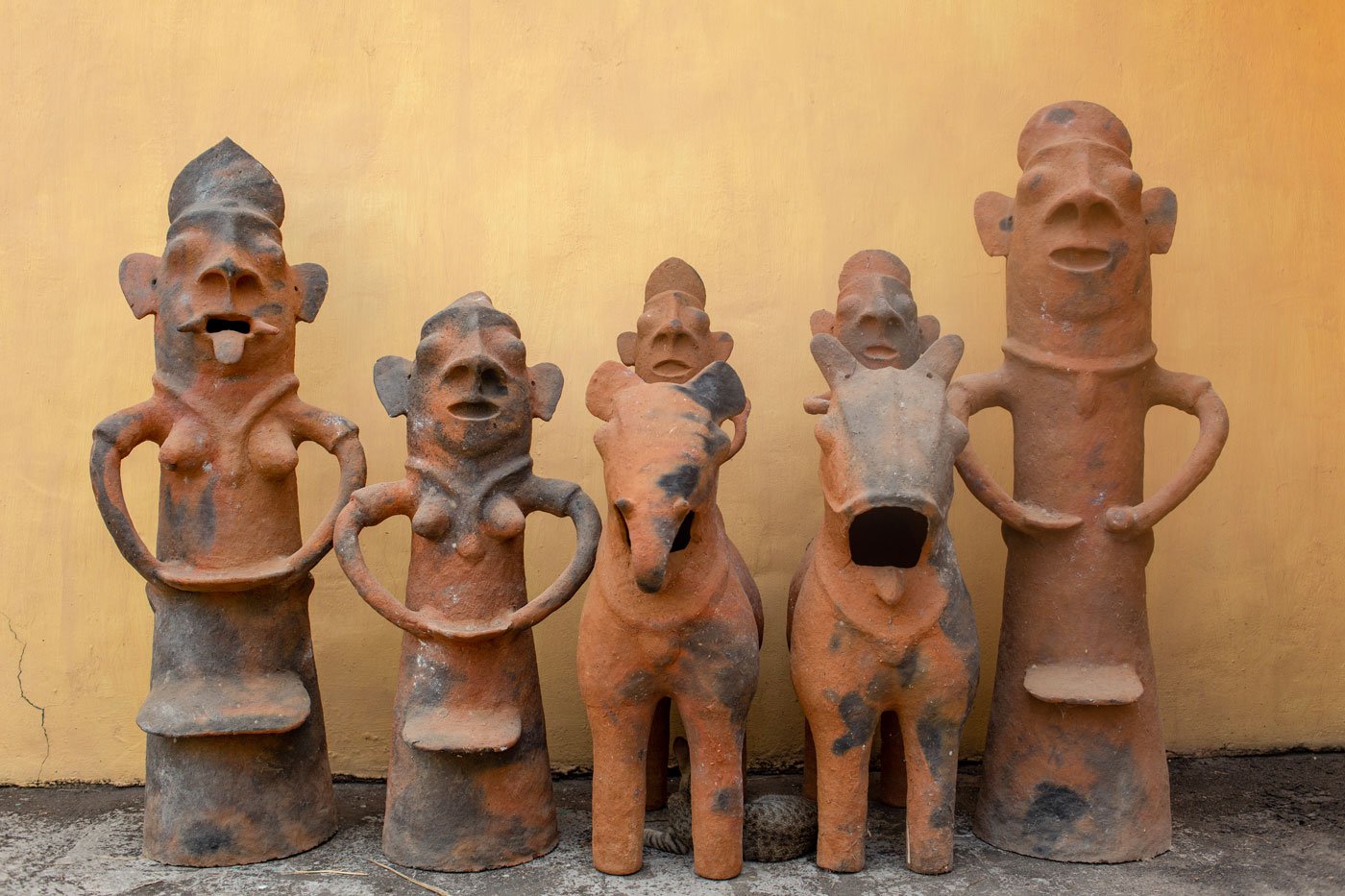
Dilli anna makes five varieties of the Kannisamy idol
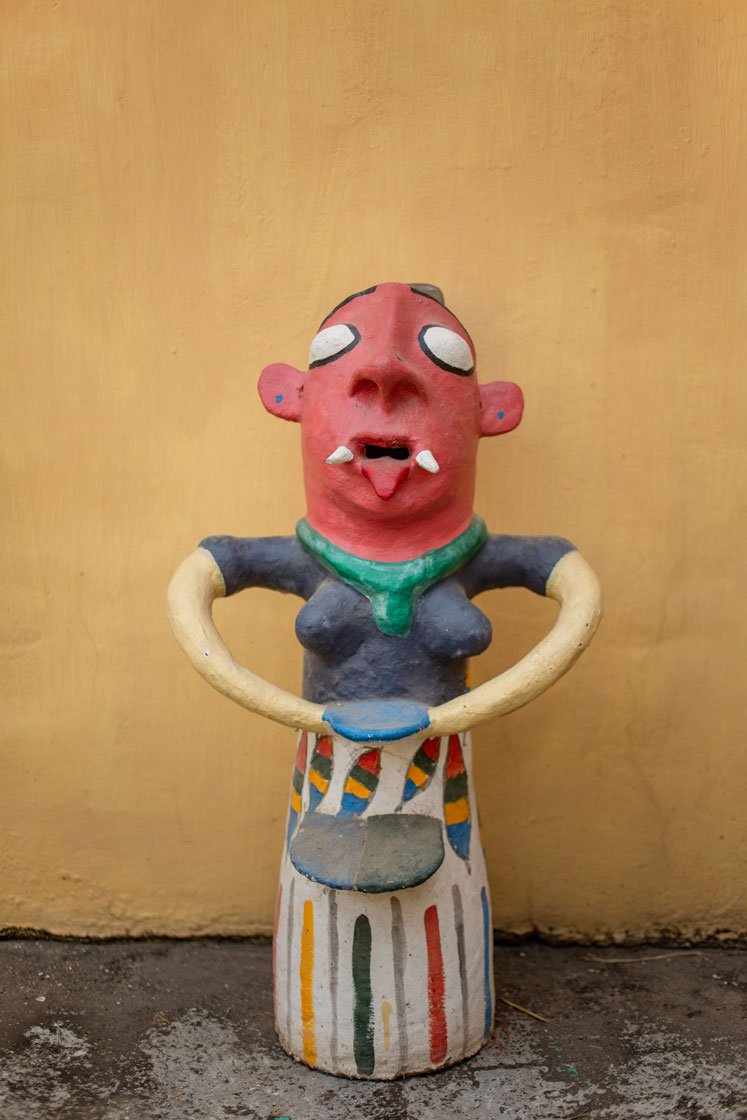
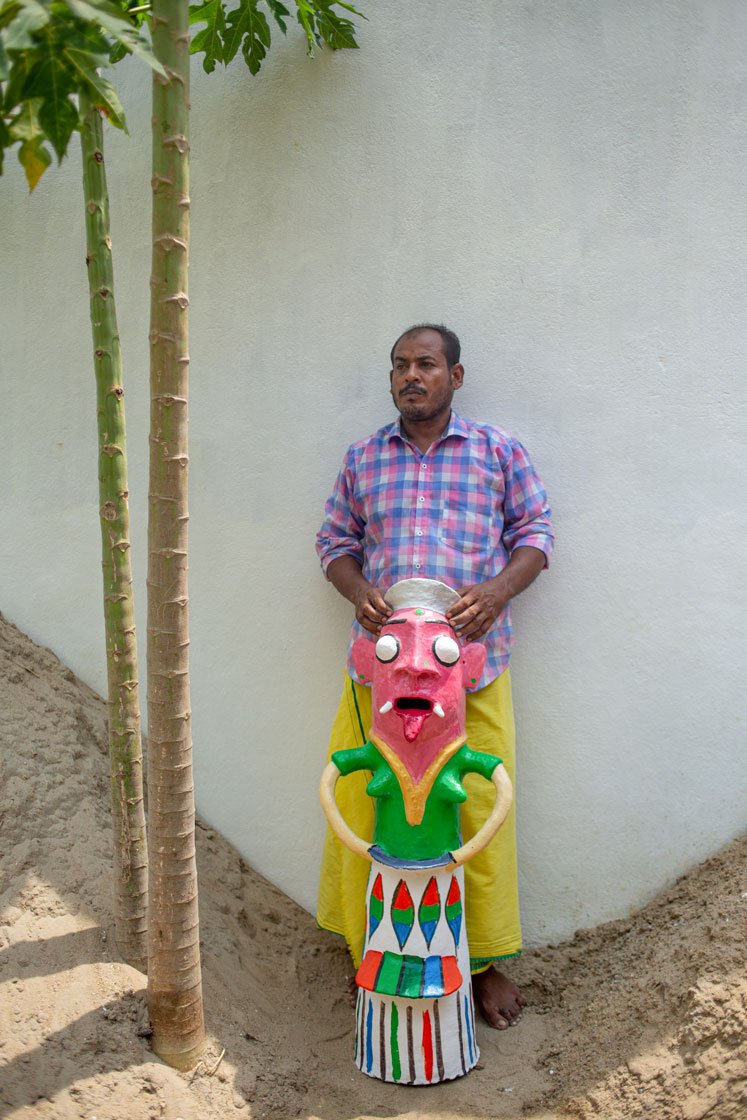
The finished idols with their maker (right)
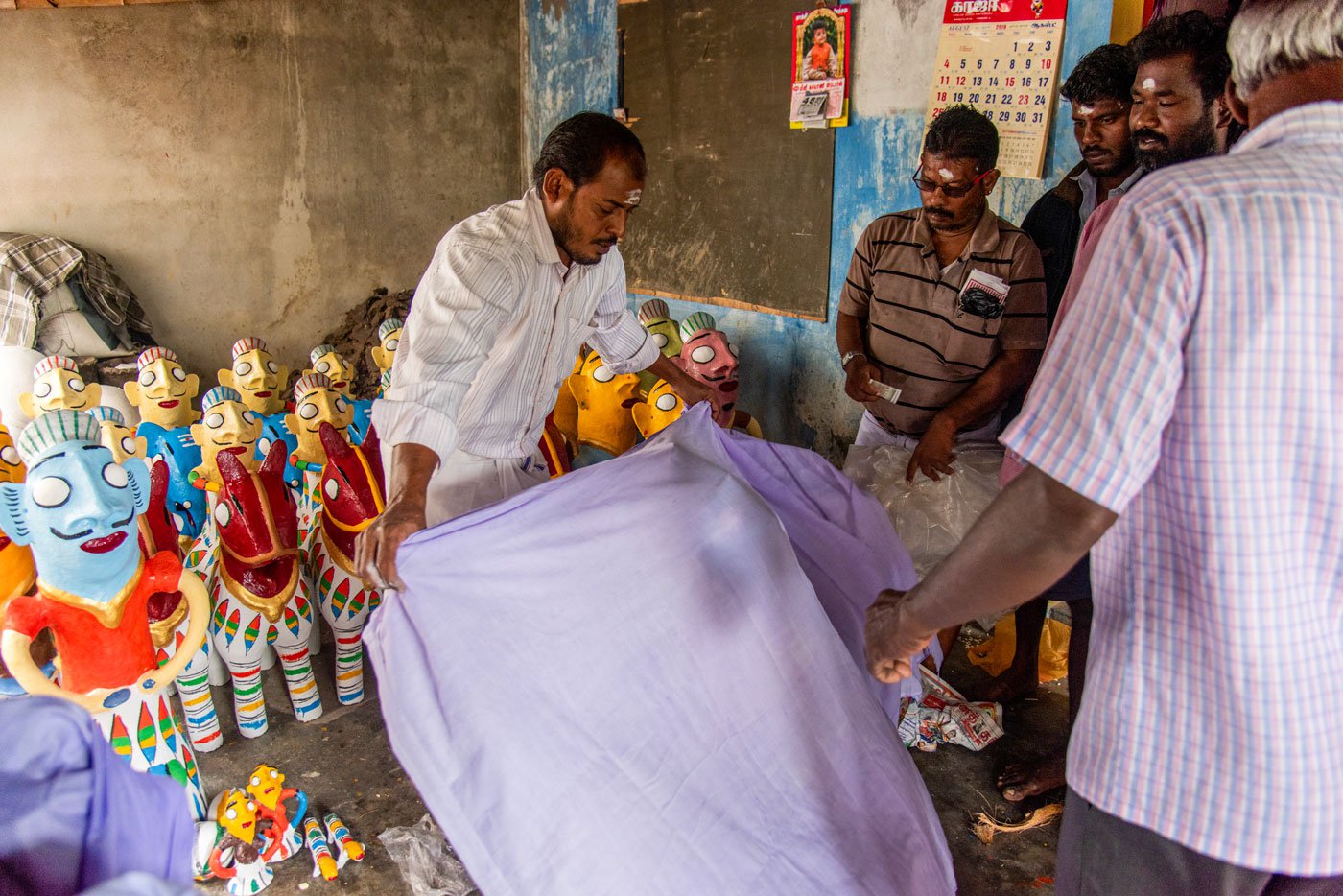
Dilli anna wrapping a white cloth around the idols prior to selling
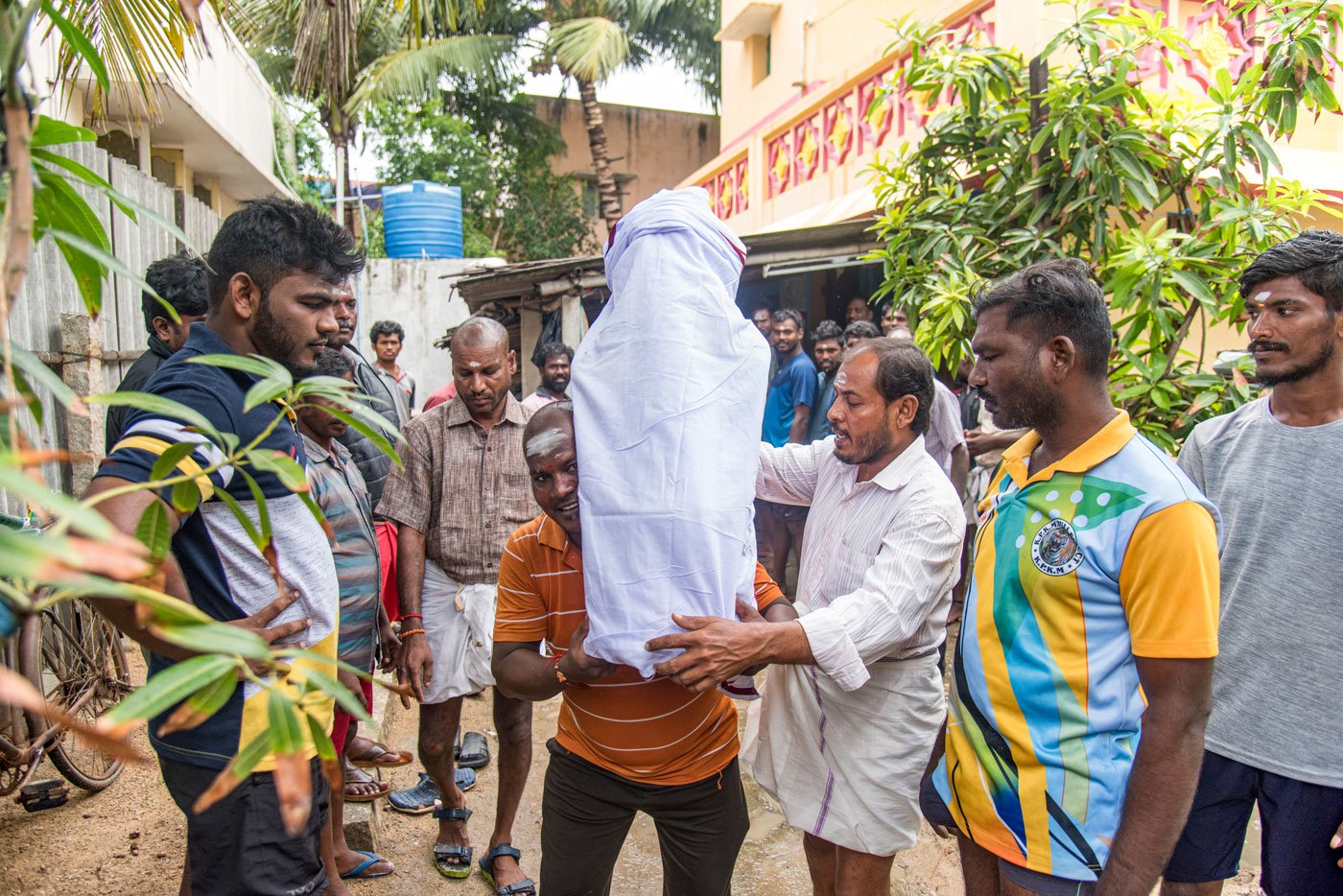
Fishermen taking the wrapped idols from Dilli anna at his house in Athipattu
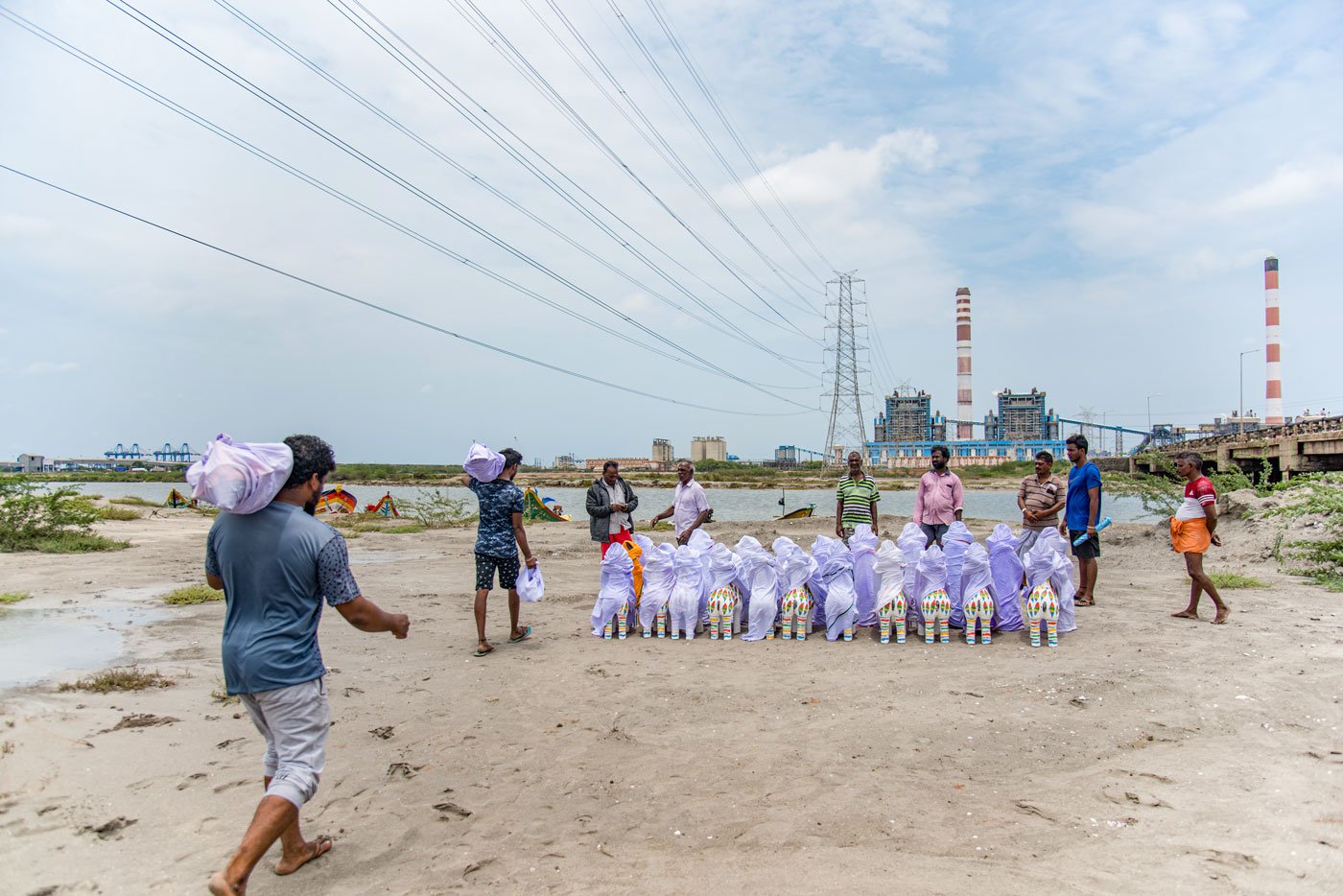
Fishermen carrying idols on their shoulders. From here they will go to their villages by boat. The Kosasthalaiyar river near north Chennai’s thermal power plant, in the background
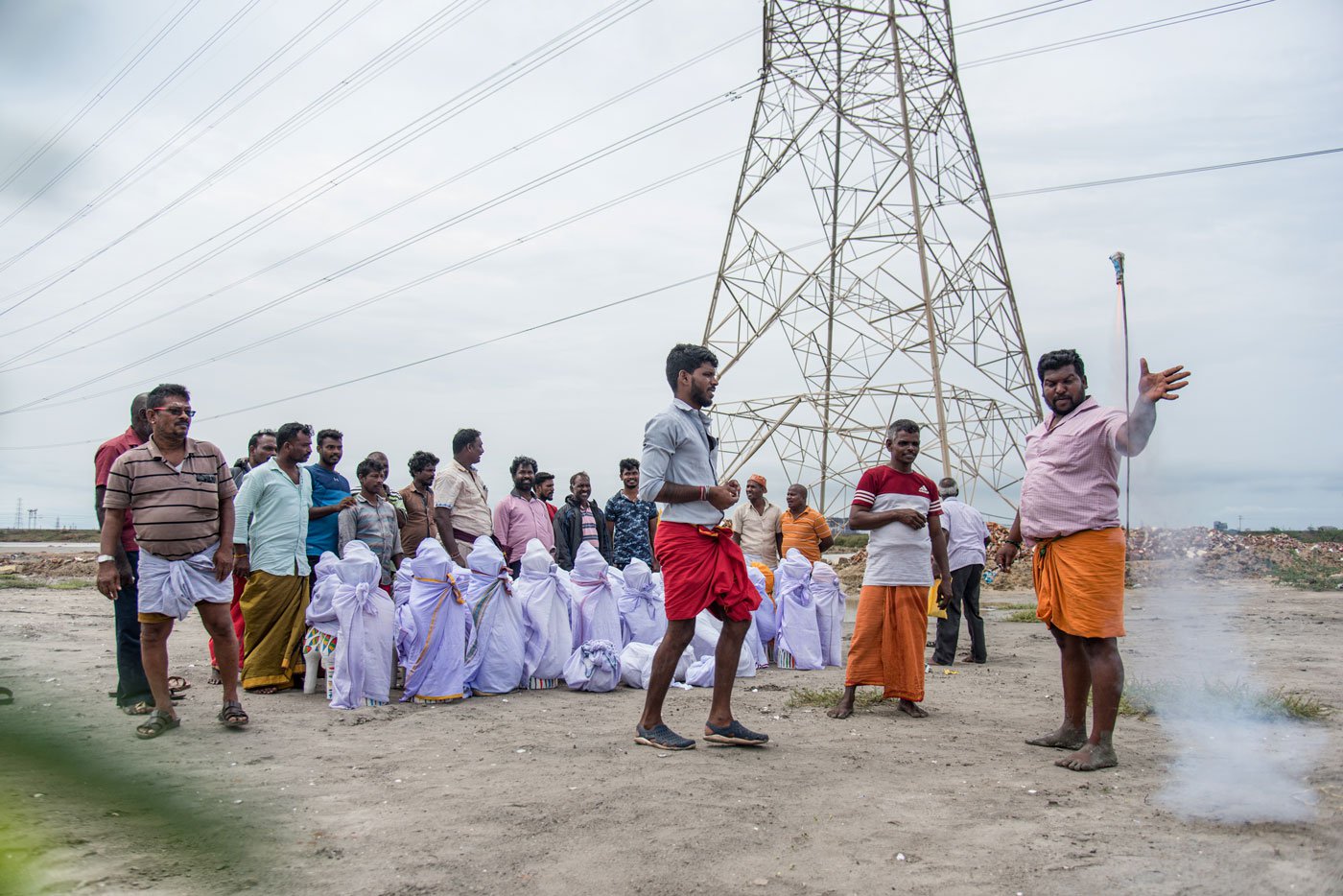
Crackers are burst as part of the ritual of returning with Kannisamy idols to their villages
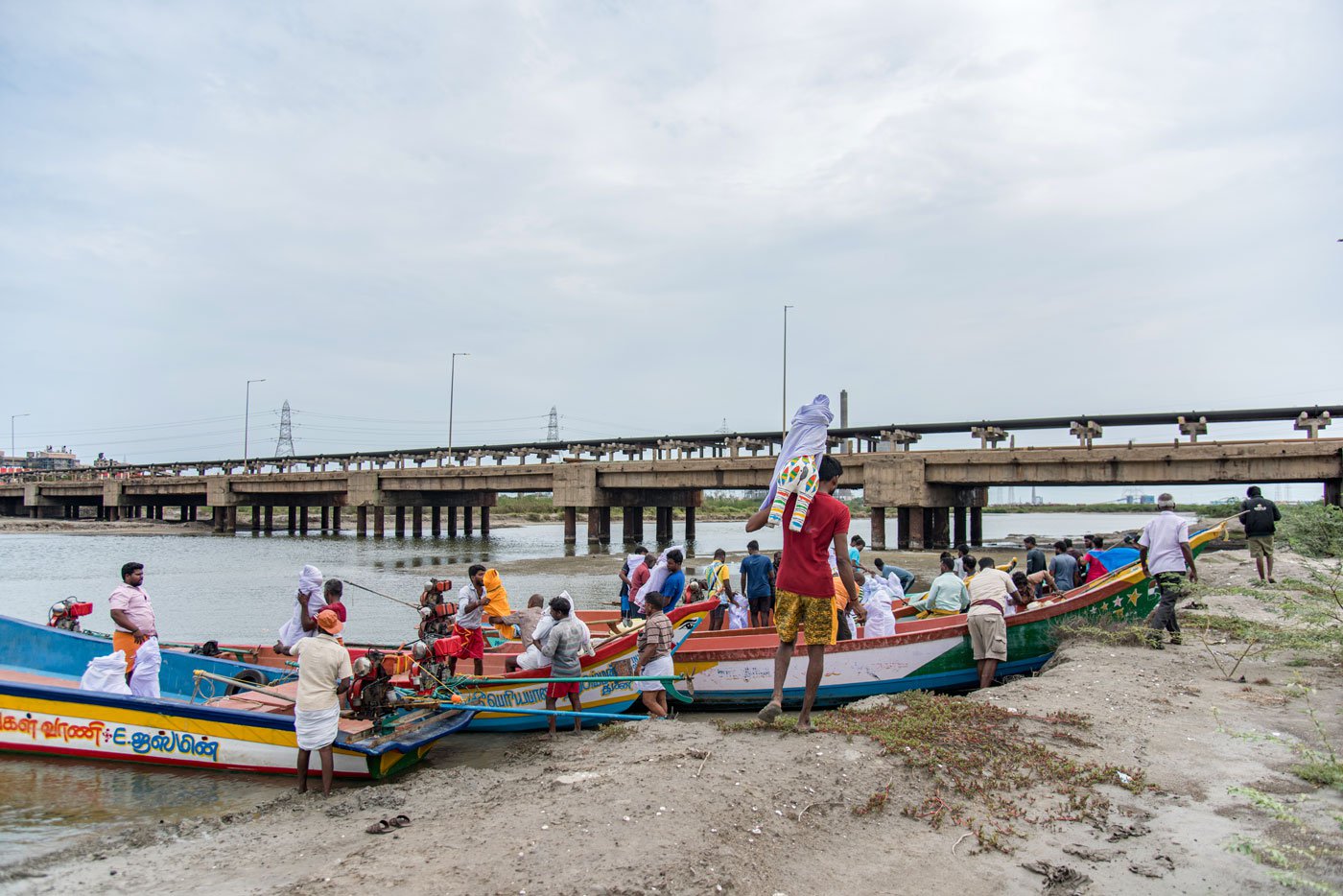
Fishermen carrying the Kannisamy idols onto their boats
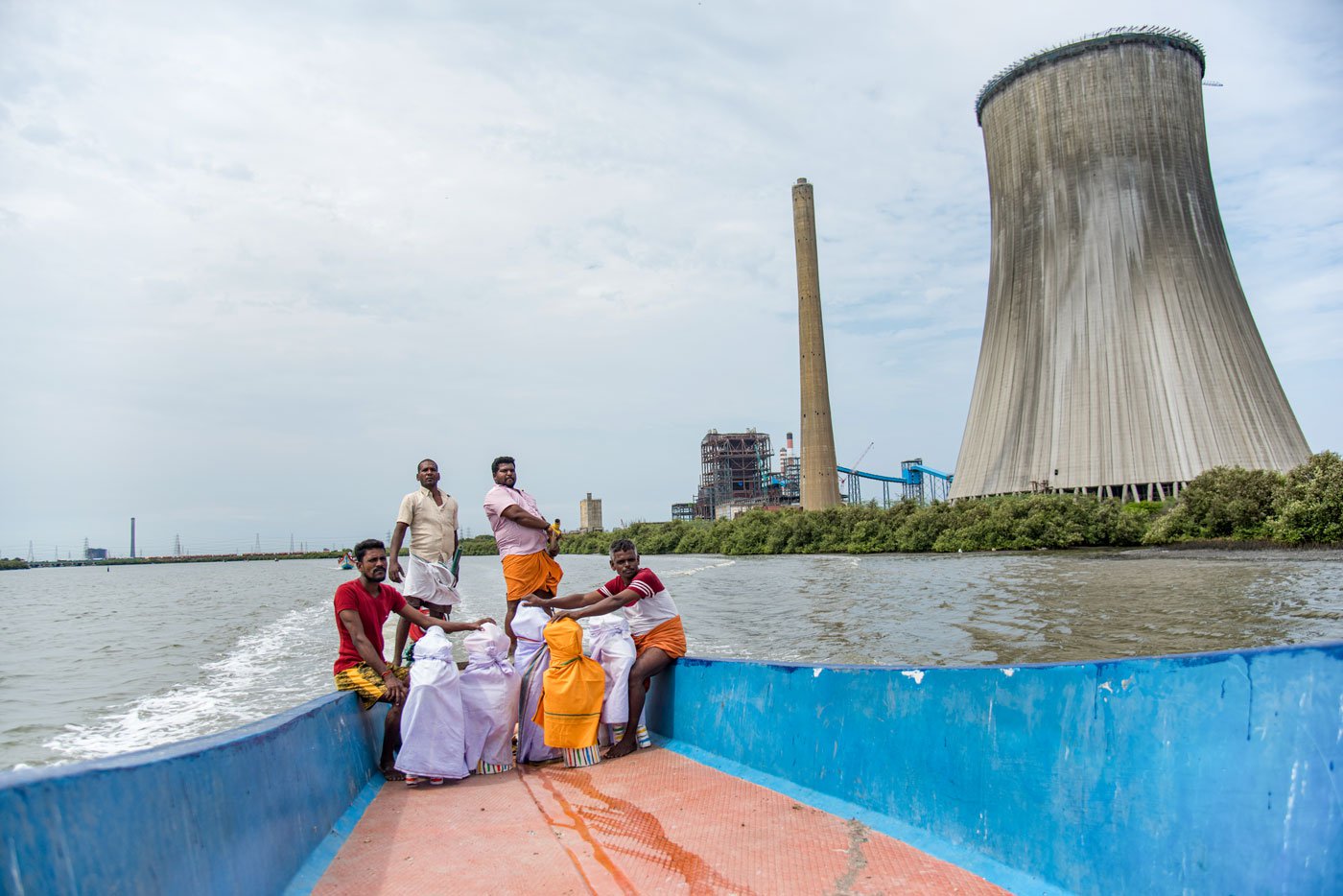
Kannisamy idols in a boat returning to the village
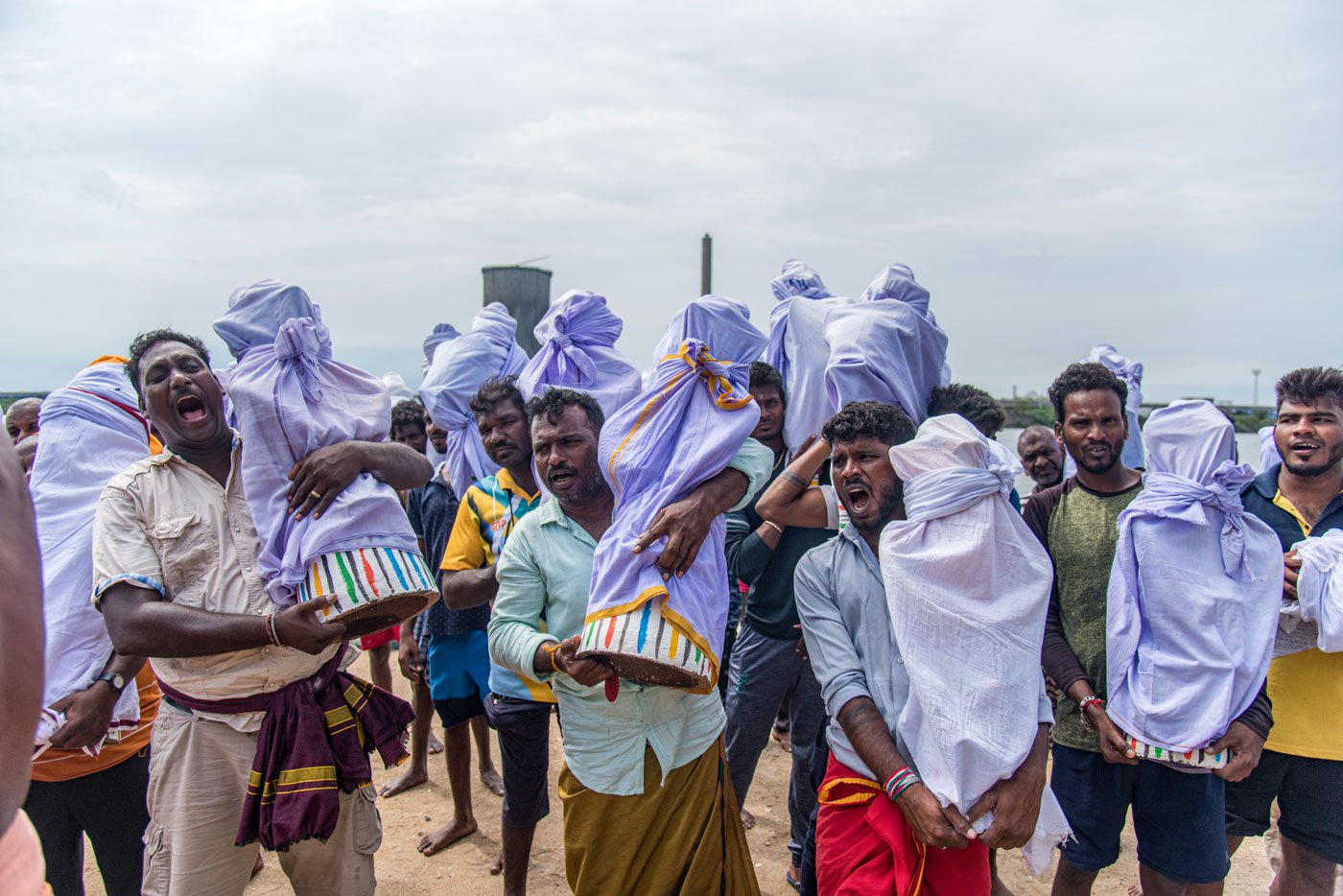
Fishermen shouting slogans as they carry the idols from the boats to their homes
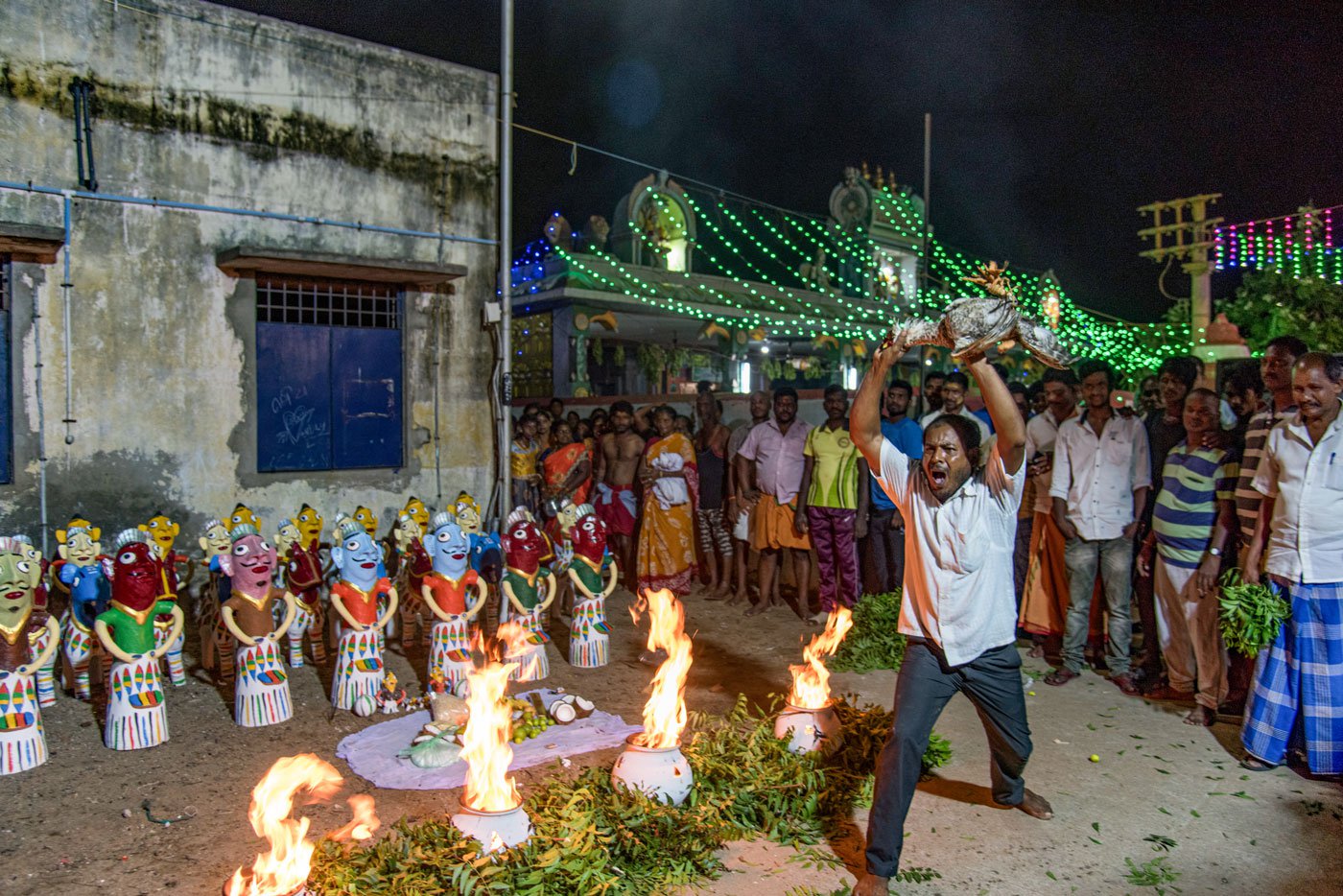
Dilli anna sacrifices a cock as part of the ritual in Ennur Kuppam festival
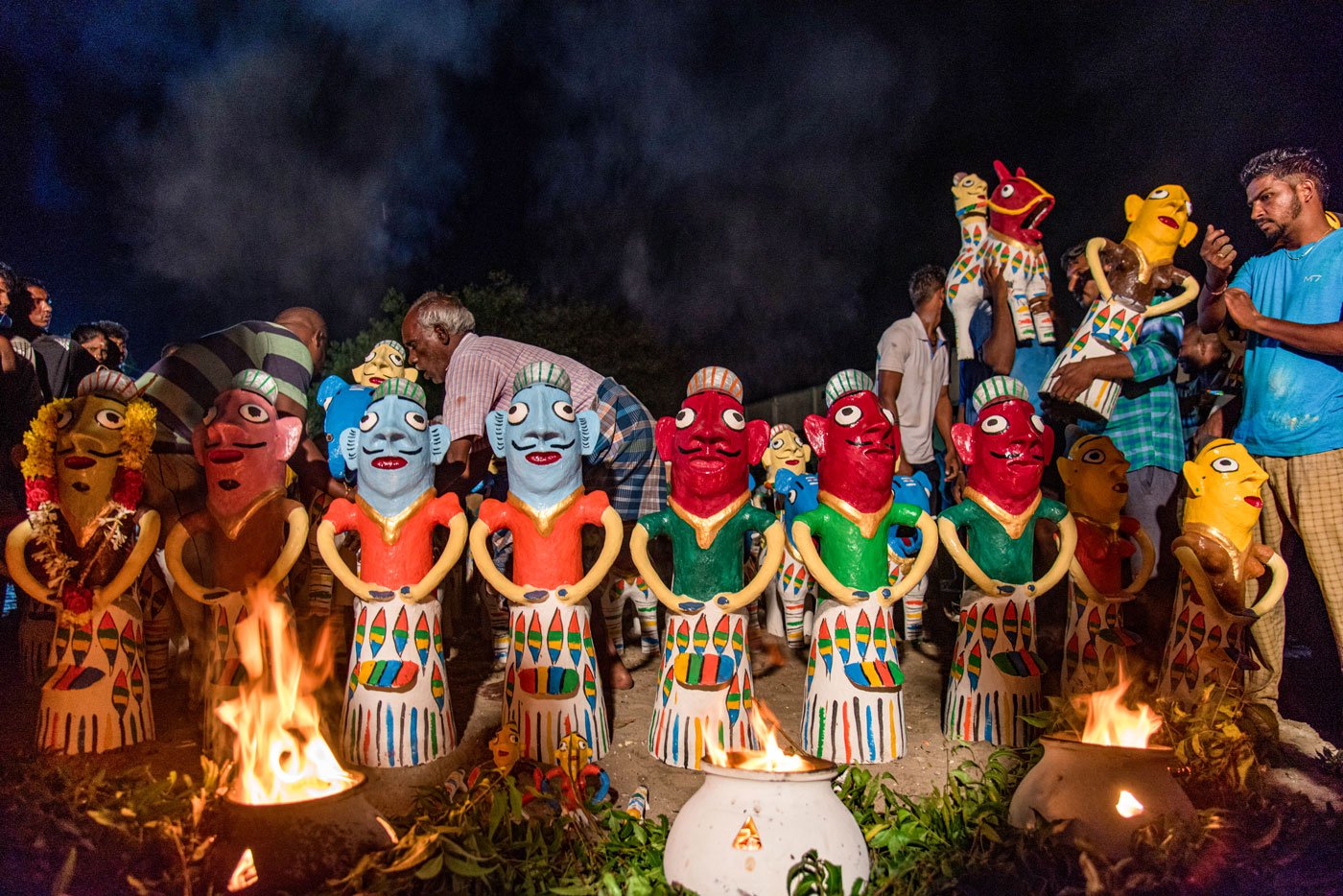
Now the idols are ready to be placed at the borders of the village
